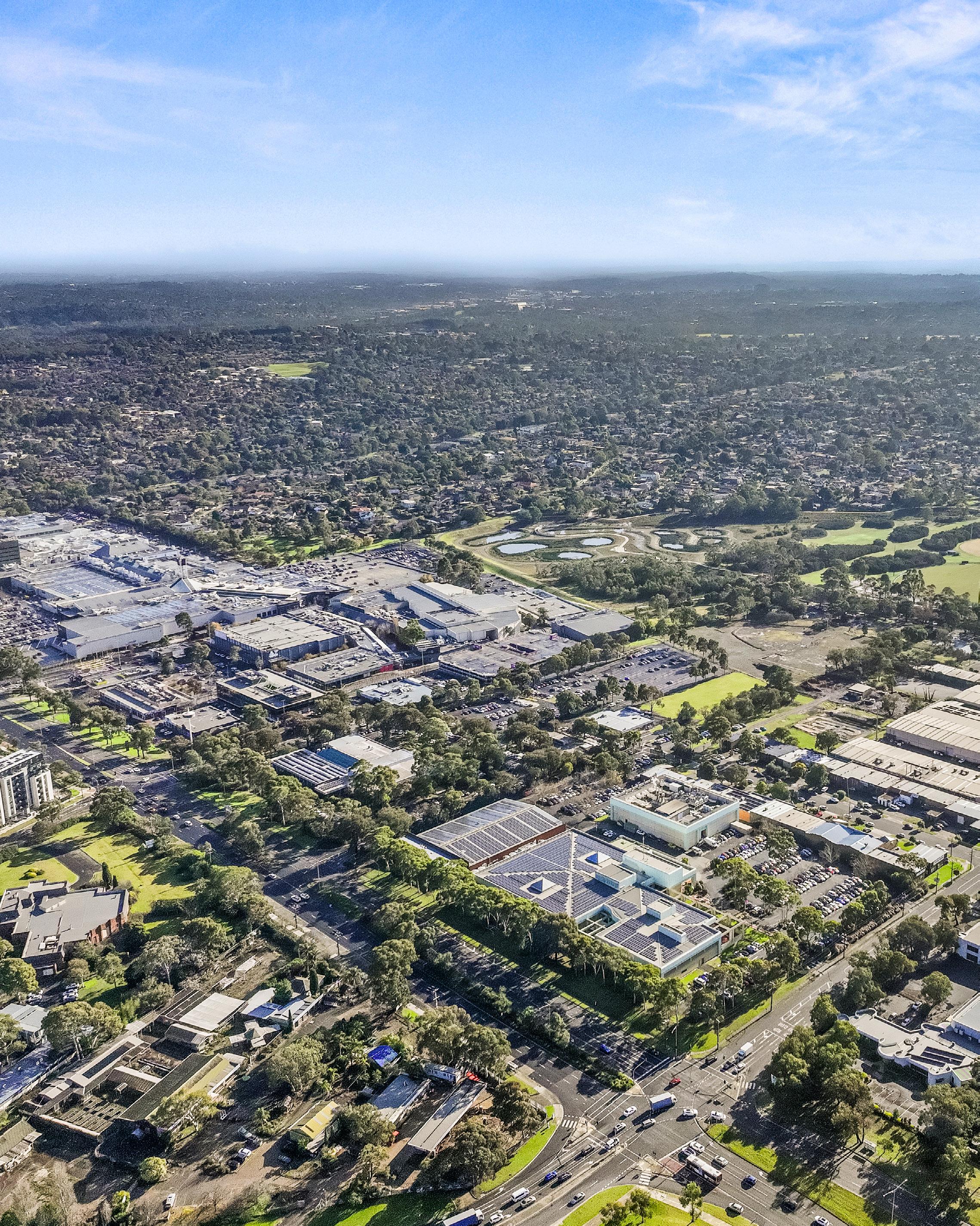

Flint Davidson
on the state of play
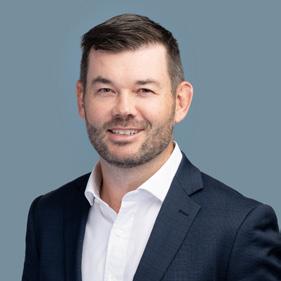
Welcome to the eighth edition of Capital Edge.
Despite an unexpected delay in further rate cuts at July’s RBA meeting, the general sentiment relating to direct real estate at present is net positive.
Rental growth is evident across most sectors, borrowing costs including margins are coming down, supply is constrained, pricing is generally at least 150bps softer than the peak and Australia is the star performer of Asia Pacific.
So why isn’t the capital racing to get set for the next cycle? Except for a few of the best assets in the hottest sectors, buyers are being selective and ultra conservative. Buyer depth thins considerably above $150 million and most active groups above this level are subject to raising capital which remains challenging.
Unfortunately for buyers, the sellers can see the same positive outlook ahead, so in the absence of any real pressure to sell - expectations rise, sellers hold and the cycle moves on. It’s hard to see what buyers are waiting for but for the most part the best buying of the cycle is already behind us.
In this issue, we explore the sectors and strategies shaping the next phase of growth. From the rise of Agribusiness as a core institutional asset class to the resilience of the Hotel sector and the evolution of Metropolitan Investments, the themes are clear: fundamentals matter, partnerships matter, and timing matters.
While global volatility remains a constant, whether from trade tensions, interest rate uncertainty, or geopolitical shifts, Australia continues to screen as a stable and strategic destination for capital. For those who can look through the noise, the opportunities are real and growing.
We hope you find this issue of Capital Edge both insightful and actionable. As always, our team remains committed to helping you navigate the market with clarity, confidence, and conviction.
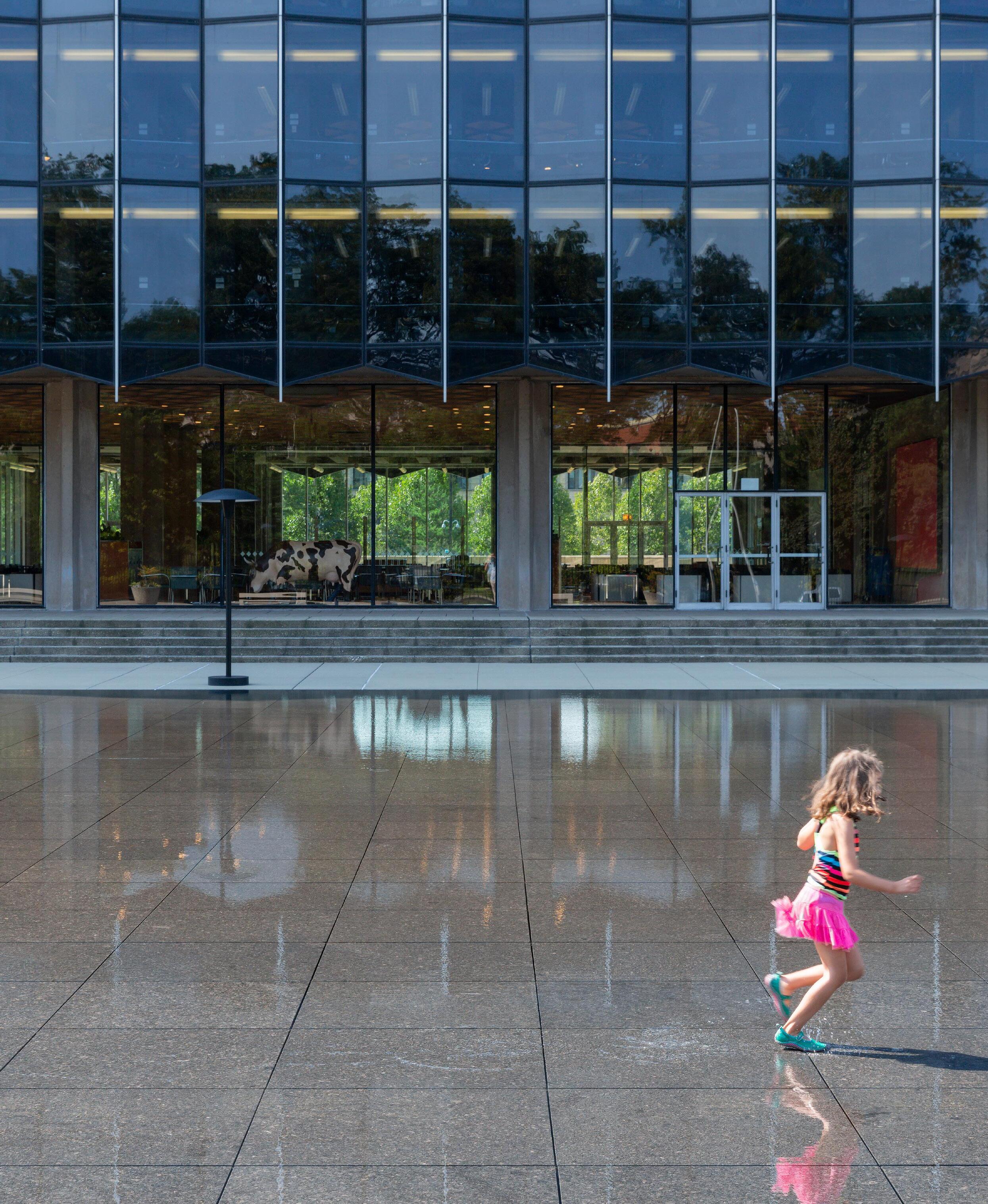
Flint Davidson
Head of Capital Markets, Pacific
+61 411 183 061
flint.davidson@cbre.com.au

Australian Capital Flows H1 2025
DOWNLOAD NOW
Scan for the full ‘Australian Capital Flows H1 2025’ report.
Australia’s commercial real estate market continued its recovery trajectory in the first half of 2025, with total investment volumes climbing to $15.5 billion – a 13% year-on-year increase. According to CBRE’s latest Australian Capital Flows Report, this growth reflects renewed investor confidence, buoyed by two interest rate cuts and expectations of further monetary easing. The market’s resilience is underpinned by attractive asset pricing, a stabilising macroeconomic backdrop, and a narrowing gap between buyer and seller expectations.
INDUSTRIAL & LOGISTICS SURGE AHEAD
The Industrial & Logistics sector emerged as the standout performer in H1 2025, with investment volumes nearly doubling to $5.4 billion – a 98% increase compared to the same period last year. This surge was largely driven by a rise in portfolio transactions, as investors sought exposure to assets benefiting from structural tailwinds such as e-commerce growth, supply chain diversification, and nearshoring strategies.
Investor appetite for I&L remains robust, particularly for assets with strong lease covenants and proximity to major transport infrastructure. The sector’s fundamentals continue to support long-term value creation, and the recent uptick in capital deployment signals growing confidence in its resilience.
RETAIL REBOUNDS, OFFICE FACES HEADWINDS
Retail investment volumes rose 29% to $4.7 billion, continuing the sector’s capital markets recovery. Investors are increasingly drawn to retail assets due to the rebasing of rents and the relative value they now offer. Neighbourhood and convenience-based centres remain particularly attractive, supported by resilient tenant mixes, consistent foot traffic, and a renewed focus on essential services.
In contrast, the office sector experienced an 11% decline in investment volumes, falling to $3.8 billion. This follows a stronger performance in 2024 and reflects ongoing caution around hybrid work trends, elevated vacancy rates, and capital expenditure requirements. However, premium-grade office assets in prime locations continue to attract selective interest, particularly from offshore buyers who are capitalising on recent price adjustments and the scale these assets offer.
OFFSHORE CAPITAL STRENGTHENS ITS FOOTHOLD
Offshore investment accounted for 28% of total capital deployed in H1 2025, marking a 17% year-on-year increase. North American investors led the charge, contributing $1.7 billion, supported by favourable exchange rates and a desire for geographic diversification. Japanese investors followed with $900 million, although this represented a slight slowdown compared to previous years, likely due to shifting domestic monetary policy and a more inward investment focus.
The office sector remained the top target for offshore capital, capturing 45% of foreign investment volumes. The I&L sector also attracted significant offshore interest, underscoring its broad-based appeal and alignment with global investment themes.
HOTELS AND LIVING SECTORS SEE PULLBACK
The Hotels and Living sectors experienced declines of 54% and 23% respectively. While these sectors had seen strong momentum in previous years, current market conditions – including higher debt costs and evolving consumer behaviour – have led to a more cautious approach from investors. Nonetheless, long-term fundamentals in the Living sector, particularly in build-to-rent and student accommodation, remain compelling and are expected to regain traction as the market stabilises.

MARKET DYNAMICS AND OUTLOOK
The broader investment landscape is being reshaped by easing monetary policy and recalibrated asset pricing. With further rate cuts anticipated and Australia’s economic fundamentals remaining sound, investor sentiment is expected to strengthen in the second half of the year.
Transaction timelines, while still extended in some cases, are beginning to shorten as pricing expectations align. The narrowing bid-ask spread is encouraging more active engagement, and the market is seeing a gradual return of competitive bidding in select segments.
LOOKING AHEAD: A MARKET IN TRANSITION
H1 2025 marked a pivotal moment for Australian commercial real estate. With capital flows rising, offshore interest rebounding, and sectoral resilience becoming more defined, the market is poised for a more active and confident second half.
Investors are sharpening their focus on quality assets and sectors with strong fundamentals.
As the market continues to stabilise, opportunities are emerging for those prepared to act decisively and take a long-term view. The outlook for the remainder of 2025 is cautiously optimistic, with momentum building across key sectors and capital ready to be deployed.
Australia remains one of the key markets for offshore investors looking to get exposure to the APAC region, with North American investors leading the charge in early 2025.
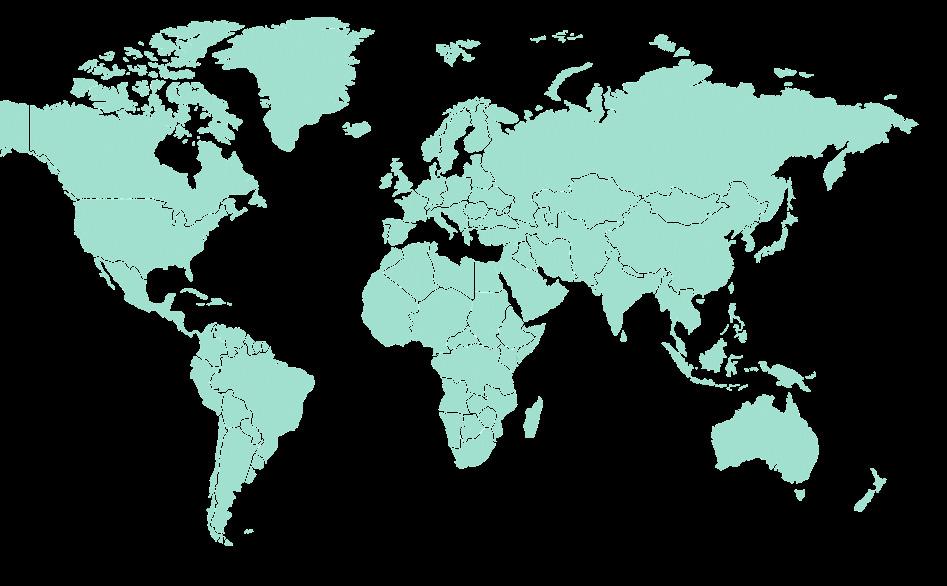
Q-on-Q Pacific Barometer

INTELLIGENT INVESTMENT
H1 2025 Australian Lender Sentiment Survey: Local Lender Appetite Unphased as Global Uncertainty Rises

Australia’s commercial real estate lending market is entering a new phase of cautious optimism, as revealed in CBRE’s H1 2025 Lender Sentiment Survey. With responses from 34 lenders, including domestic and international banks, as well as non-bank financial institutions, the survey offers a comprehensive snapshot of a market in transition. It reflects a delicate balance between opportunity and caution as lenders respond to evolving macroeconomic signals, sectoral shifts and borrower strategies.
A DIVIDED OUTLOOK AMID RATE CUTS
The Reserve Bank of Australia’s monetary easing cycle has begun, but lender sentiment remains divided. While 53 per cent of respondents expect two more rate cuts in 2025, there is no clear consensus on the terminal rate. This divergence reflects broader uncertainty about inflation trajectories, global economic headwinds and the pace of domestic recovery.
Despite this ambiguity, lender appetite remains robust. A notable 56 per cent of respondents plan to expand their commercial real estate loan books over the next six months, and none intend to reduce exposure. This signals a strong underlying confidence in the resilience of Australia’s commercial real estate market.
“The domestic banks sit on strong balance sheets. There has been a significant amount of capital raised in the private credit sector, which is underpinning competitive tension and strong appetite for lending to quality assets and sponsors,” said Andrew McCasker, Managing Director of Debt & Structured Finance at CBRE.
This competitive tension is particularly evident in the non-bank sector, where private credit funds are increasingly stepping in to fill gaps left by traditional lenders, especially in transitional or value-add opportunities.
SECTOR PREFERENCES: INDUSTRIAL STILL LEADS, OFFICE FACES SCRUTINY
Lenders continue to favour the industrial and logistics sector, which remains the most preferred asset class despite some moderation in fundamentals. The sector’s resilience, underpinned by e-commerce demand and supply chain reconfiguration, continues to attract capital.
Residential development, especially build-to-sell and build-to-rent, has also gained momentum. The build-to-rent sector in particular is benefiting from structural housing under-supply and growing institutional interest.
In contrast, enthusiasm for data centres has cooled slightly after peaking in late 2024. Meanwhile, the office sector remains the most polarising. Lenders are increasingly selective, favouring repositioning plays and prime-grade assets in core CBD locations.
“Amid caution in the office sector, we are seeing lenders take a considered approach that reflects the flight to quality in the asset class. For Prime and A-grade assets in core locations, lenders will price aggressively for the exposure,” noted Will Edwards, Director of Debt & Structured Finance at CBRE.
This bifurcation is reshaping lending strategies. Many lenders now require detailed repositioning plans and ESG credentials as part of their underwriting criteria.
CREDIT
CONDITIONS: MARGINS, LVRS AND HEDGING TRENDS
Credit margins are beginning to rise from cyclical lows, with 32 per cent of lenders expecting an increase of at least 10 basis points in the next quarter. This reflects both a recalibration of risk and a response to funding cost pressures.
Loan-to-value ratios (LVRs) are also tightening. Over 85 per cent of lenders now require LVRs of 50 per cent or higher, a marked shift from previous cycles. This conservative stance is particularly evident in sectors facing structural headwinds, such as secondary office and retail.
Hedging requirements are easing. More than two-thirds of lenders now require interest rate hedging on just 0 to 25 per cent of loans. This reflects growing confidence in the downward trajectory of interest rates and a desire to reduce borrower friction.
REFINANCING AND
REPOSITIONING:
A STRATEGIC SHIFT
Refinancing appetite is increasingly nuanced. Lenders are placing greater emphasis on asset type, location and sponsor track record. These factors now outweigh traditional metrics such as loan size or tenure.
Borrowers are responding with proactive asset management strategies. Fitouts, ESG upgrades and tenant repositioning are becoming essential to securing favourable financing terms. In many cases, lenders are willing to support capital expenditure programmes that enhance asset quality and long-term value.
This shift is particularly evident in the office sector, where repositioning strategies such as converting under-performing assets into mixed-use or residential formats are gaining traction.
LOOKING AHEAD: A MARKET IN TRANSITION
The H1 2025 survey reveals a commercial real estate lending market that is both resilient and discerning. While capital remains available, lenders are sharpening their focus on quality, sustainability and strategic alignment.
The domestic banks sit on strong balance sheets. There has been a significant amount of capital raised in the private credit sector, which is underpinning competitive tension and strong appetite for lending to quality assets and sponsors.

Andrew
McCasker
Managing Director, Debt & Structured Finance +61 438 947 780 andrew.mccasker@cbre.com.au
“We’re seeing a more sophisticated approach to risk. Lenders are differentiating not just by asset class, but also by micro-location, ESG performance and sponsor capability,” said Sarah Quinn, Senior Director, Capital Markets Research at CBRE.
As Australia’s economic trajectory continues to evolve, the ability to navigate this divergence—between optimism and caution, between sectors and strategies—will define success in the next chapter of commercial real estate finance.
READ MORE
Scan for the full ‘H1 2025 Australia Lender Sentiment Survey’ Report
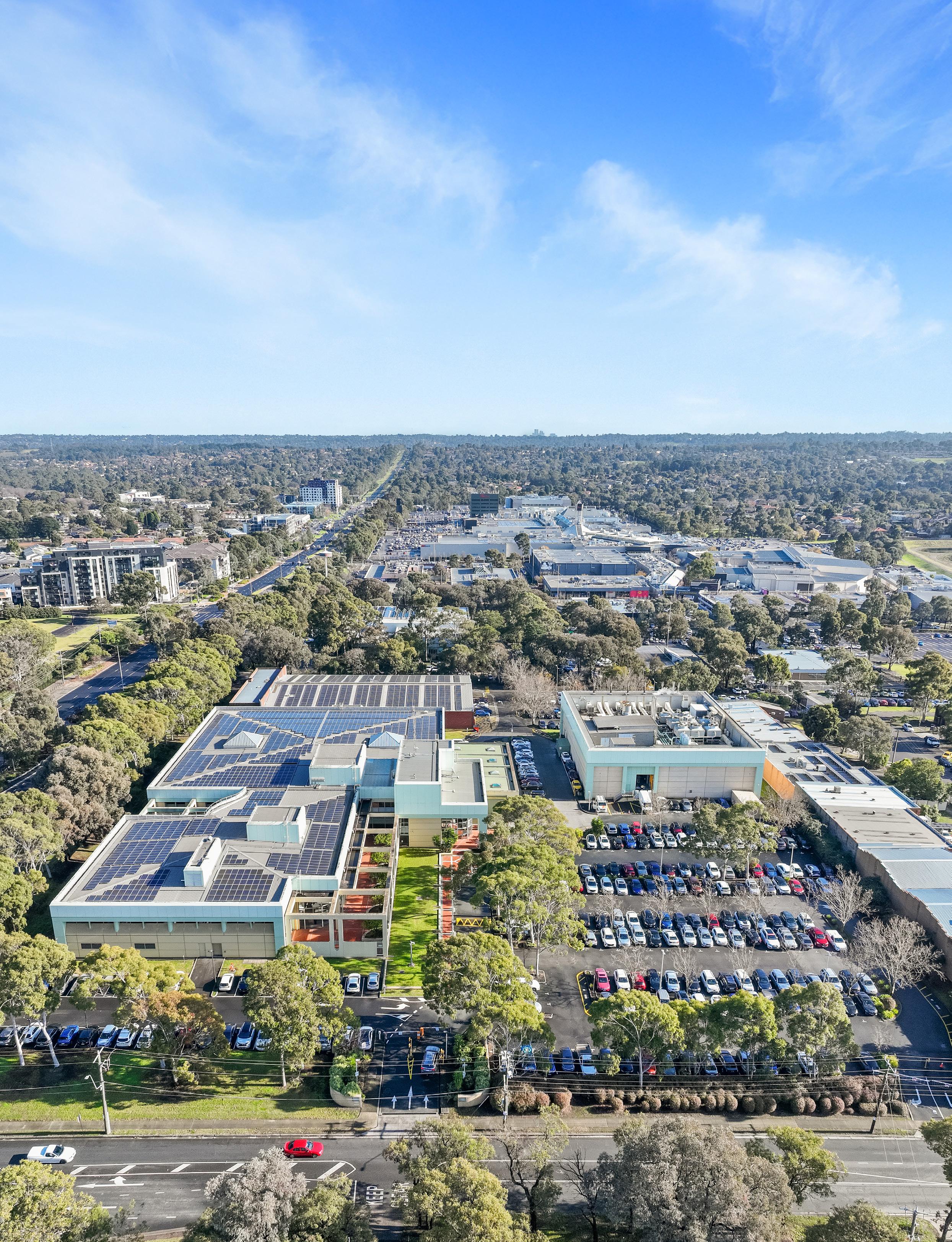
Capital Spotlight Strategic. Flexible. Future-ready.

Knox Data Centre: A Strategic Investment in Melbourne’s Digital and Mixed-Use Future.
Located at the high-profile junction of Burwood Highway and Lewis Road in Wantirna South, the Knox Data Centre represents a rare opportunity to acquire a large-scale, income-producing asset with significant future upside. Comprising two adjoining lots totalling circa 3.2 hectares and approximately 11,760 sqm of gross lettable area, the property offers a compelling blend of digital infrastructure and flexible real estate in one of Melbourne’s most tightly held corridors.
The primary asset is a purpose-built data centre with a four-level structure with office and disaster relief accommodation above two basement-level data halls, supported by a dedicated services building. This robust infrastructure provides immediate operational stability and long-term scalability for data centre developers, operators and hyperscalers.
Next door offers an office and warehouse facility on a circa 7,920 sqm site. With low site coverage and generous car parking, the building is currently used for storage but is well suited to a range of alternative uses. Together, the two properties provide dual street frontage and are zoned 'Mixed Use', enabling a wide array of repositioning or redevelopment outcomes (STCA).
INFRASTRUCTURE, INCOME AND OPTIONALITY
The existing improvements across both sites are substantial and diverse, supporting a range of future uses. The data centre features make it a highly attractive proposition for digital infrastructure investors seeking a scalable asset in a proven location.
Importantly, the property is underpinned by a leaseback to NAB, providing secure holding income during planning and repositioning phases. This lease structure offers a low-risk entry point while allowing time to explore and execute on value-add strategies.
The flexibility of the existing buildings unlocks a broad spectrum of future uses. Potential repositioning options include life sciences, tertiary education, self-storage, cold storage, government services, and business park developments. Alternatively, the site could be redeveloped into a next-generation data centre, logistics hub or mixed-use precinct, capitalising on its strategic location and infrastructure.
A CONNECTED AND EVOLVING PRECINCT
Wantirna South is a well-established suburb approximately 26 kilometres east of Melbourne’s CBD. The area benefits from excellent connectivity via Eastlink, Ferntree Gully Road and the Monash Freeway, and is within a 30-minute drive of over 50% of Greater Melbourne’s population. This centrality enhances the site’s appeal for occupiers and investors alike.
The precinct is home to an established cluster of data centres and technology infrastructure, including facilities operated by Telstra InfraCo, Fujitsu, Vocus and DXC. The proximity to Westfield Knox Shopping Centre and surrounding residential communities further enhances the site’s amenity and workforce accessibility. With ongoing infrastructure upgrades and capital works in the area, Wantirna South is well-positioned for continued growth and evolution.
With its scale, infrastructure and zoning flexibility, the Knox Data Centre is uniquely positioned to meet the evolving demands of digital infrastructure, urban infill and mixed-use development. For investors seeking a future-proofed asset in a strategic Melbourne location, this is an opportunity not to be missed.
The property is being offered for sale via Expressions of Interest.

CBRE Expands Private Investor Reach with Acquisition of Burgess Rawson
CBRE has taken a significant step in strengthening our position in Australia’s private and high net worth commercial property market with the acquisition of Burgess Rawson, a leading agency renowned for its deep relationships with private investors and its expertise across a diverse range of asset classes.
The acquisition enhances CBRE’s Metropolitan Investments platform, which specialises in commercial property assets and development sites valued at up to $35 million. By integrating Burgess Rawson’s national footprint and market-leading capabilities, CBRE is poised to deliver even greater value to clients across the investment spectrum.
Burgess Rawson brings to CBRE a team of more than 80 professionals and a strong track record in managing transactions across sectors such as early education, convenience retail, fast food, healthcare, large-format retail and service stations. The firm is particularly well known for its national portfolio campaigns and its ability to connect with Australia’s most active private investors.
The combined Metropolitan Investments team will be led by Ingrid Filmer, CEO of Burgess Rawson, who brings decades of experience and a deep understanding of the private investor landscape.
Phil Rowland, CBRE’s CEO of Australia and New Zealand, said the acquisition aligns with CBRE’s strategy to better serve the increasingly sophisticated
private investor market. “This move allows us to diversify into new asset types and geographies, while also gaining access to exceptional leadership and broker talent,” Phil said. “It positions us strongly in what remains a fragmented part of the investment sector.”
Ingrid said the partnership marks a new chapter for Burgess Rawson, which has spent 50 years building trust with private investors and establishing a national platform. “Joining CBRE gives us the scale, capability and reach to elevate what we do best,” Ingrid said. “Our clients will benefit from access to international capital, world-class research and broader market opportunities than ever before.”
Flint Davidson, CBRE’s Head of Capital Markets, said the acquisition represents a pivotal moment for CBRE’s investment platform. “The integration of Burgess Rawson’s trusted private investor relationships and CBRE’s global reach creates a powerful combination,” Flint said. “It enables us to deliver more tailored investment solutions and unlock new opportunities for our clients across Australia’s private investor markets.”
As CBRE and Burgess Rawson come together, the combined team is set to offer a more powerful and connected service offering for high net worth individuals, developers, owner-operators, REITs, syndicators and family offices across Australia.

As the new Head of CBRE’s Metropolitan Investments team and former co-owner of Burgess Rawson, Ingrid Filmer brings more than two decades of leadership in Australia’s private investor market. Known for her strategic vision, deep client relationships and national campaign expertise, Ingrid has played a pivotal role in shaping the sub-$35 million commercial property sector. Now at the helm of a newly integrated platform, she is focused on delivering greater value, scale and opportunity for private capital across the country.
Burgess Rawson has a 50-year legacy in the Australian property market. What are you most proud of when you look back on that journey?
“We built a business that knew exactly what it stood for. We weren’t chasing trends or trying to be everything to everyone. We focused on essential services — childcare, fuel, fast food, medical, government assets — and we backed those sectors when others didn’t.
“We didn’t just build something that worked in Sydney or Melbourne. We understood the regions. We knew how to service the whole country. That’s a real strength of ours — and something we’re not letting go of.
“And while auction is just a method of sale, we took it and turned it into a complete transaction system. We’ve run it nationally, we’ve refined it, and we’ve delivered transparent, real-time results for 23 years. It’s stood the test of time because it’s consistent, trusted, and accountable. It’s helped shape who we are and what clients expect from us, clarity, speed, and competition.”
What made CBRE the right partner for Burgess Rawson at this stage in its evolution?
“CBRE saw what we’d built and wanted to enhance it, not override it. They didn’t just see a great business, they saw a great system. Strong leadership, strong people, loyal clients, and real capability across sales, management, valuations, and advisory. They knew they could help us scale it and take it further.
“We weren’t looking for a lifeline. We were looking for a partner who’d back our momentum and help us open doors that were previously out of reach, and that’s what CBRE has done.”
How do you see the cultures of the two firms complementing each other?
“We bring speed, relationships, and deep market knowledge. CBRE brings global reach, data, and structure. There’s respect both ways. We’re keeping the edge that made us successful, but now with more firepower behind it.”
Meet Ingrid Filmer
You’re now leading the combined Metropolitan Investments team. What’s your vision for this next chapter?
“We’re building a national private wealth platform like no other. Sales is just one part of it. We’re also giving clients access to strategic advice, valuations, leasing, asset management, and debt and all under one roof. This is a one-stop shop for high net worth individuals and family offices who want full-circle support. We’re part of their wealth journey now, not just on one deal, but over decades.
“My job is to lead from the front and make sure our teams have what they need to grow. That means the right clients, the right tools, and the right vision. I’ve stepped out of business ownership and into a leadership role where I get to focus entirely on people, performance, and outcomes. And I’m excited to get started.”
How will this acquisition help unlock new opportunities for clients, particularly high net worth individuals and family offices?
“Burgess Rawson has always delivered strong outcomes, but now we can do it at scale. CBRE gives us global reach, access to new capital pools, and capabilities that weren’t previously on the table. Clients now benefit from broader advisory, more strategic deal structuring, and cross-border opportunities. They still get the same team, the same trust, the same process, just with more depth and more ways to grow.”
What role do you see technology and data playing in the future of private capital transactions?
“It’s essential. Data sharpens everything — how we price, how we market, how we engage with buyers. But it only works if you’ve got people who know how to use it. We’ve always been strong on relationships and execution. Now, with CBRE’s tools, we’re taking that to a new level.”
You’ve spoken before about the importance of relationships in this industry. How has that shaped your leadership style?
“Everything starts and ends with relationships. You can have all the data and systems in the world, but if people don’t trust you, none of it matters. That’s how I lead. Be present, be honest, and back your team. I’ve built my career by building people up and backing their growth. That won’t change.
“Now we’ve got the opportunity to combine that culture with CBRE’s global reach, and it’s only going to make us stronger across Australia.”
INTELLIGENT INVESTMENT
The Great Withdrawal: Sydney’s Office Market Faces a Structural Reset
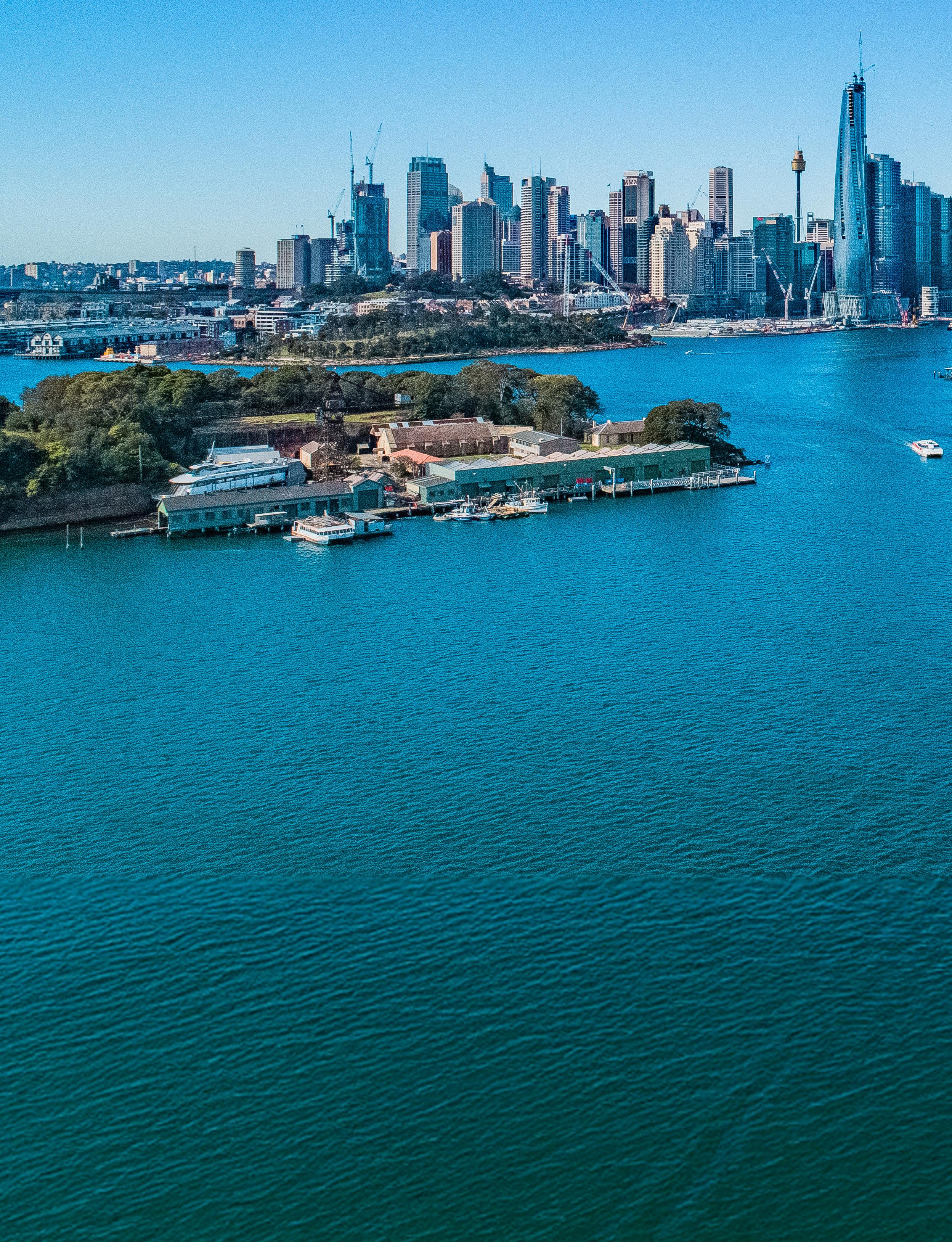
Sydney’s CBD office market is undergoing a profound transformation. Over the next five years, a significant volume of commercial office space is expected to be withdrawn from the market, reshaping the city’s commercial core. According to CBRE’s latest research, approximately 241,336 square metres of office stock in the Sydney CBD is forecast to be removed. These withdrawals may be permanent, temporary, or under review, but together they represent a major shift in the way the city’s office market is evolving.
A STRUCTURAL SHIFT, NOT JUST A CYCLE
Unlike previous downturns, this trend is not simply a cyclical correction. It reflects a deeper, structural change in how office space is used, valued, and delivered. The widespread adoption of hybrid work models, combined with rising vacancy rates and the ageing of older buildings, has created a tipping point. Many landlords are now reassessing the long-term viability of their assets, particularly those that no longer meet the expectations of modern occupiers.
Tenants are increasingly focused on quality over quantity. They are seeking buildings that offer strong sustainability credentials, high levels of amenity, and flexible, tech-enabled workspaces. As a result, demand is consolidating around premium and A-grade assets, while older, less efficient buildings are being left behind.
WHERE WITHDRAWALS ARE CONCENTRATED
CBRE’s analysis shows that the majority of forecast withdrawals are concentrated in the midtown and western corridor precincts of the CBD. These areas have a higher proportion of aging stock and have seen softer leasing demand in recent years. In contrast, the core and waterfront precincts are expected to remain more resilient, supported by stronger tenant demand and a higher concentration of premium-grade buildings.
The types of withdrawals vary. Some buildings are being permanently removed from the office market through conversion to residential or hotel use. Others
are being temporarily withdrawn for major refurbishment or redevelopment. A third category includes assets that are under review, where owners are evaluating their options in light of market conditions.
SUPPLY CONTRACTION AND LIMITED NEW DEVELOPMENT
What makes this trend particularly significant is that it is occurring during a period of limited new office development. With construction activity slowing due to higher financing costs, planning delays, and economic uncertainty, the pipeline of new supply is relatively modest. This creates a rare scenario where the total stock of office space in the CBD may actually decline.
This contraction in supply is expected to have a material impact on vacancy rates over the medium term. As older, less competitive buildings exit the market, the remaining stock, particularly high-quality assets, may benefit from tightening conditions and renewed leasing momentum. This could help stabilise rents and improve occupancy levels in the better-performing segments of the market.
IMPLICATIONS FOR INVESTORS AND ASSET OWNERS
For investors, the Great Withdrawal presents both risks and opportunities. On the one hand, assets that are no longer aligned with tenant expectations may face declining values, reduced liquidity, and higher capital expenditure requirements. On the other hand, there is growing potential for value creation through repositioning, adaptive reuse, or conversion to alternative uses.
Some owners are already exploring conversions to residential, hotel, or mixeduse developments, particularly in locations with strong amenity and transport links. Others are undertaking major refurbishments to bring older buildings up to modern standards, incorporating features such as end-of-trip facilities, energy-efficient systems, and flexible floorplates.
THE ROLE OF POLICY AND PLANNING
Government policy and planning frameworks will play a critical role in shaping the future of the CBD. Flexible zoning, incentives for adaptive reuse, and
streamlined approval processes could help accelerate the transformation of outdated stock into vibrant, future-ready spaces. Collaboration between the public and private sectors will be essential to ensure that the CBD remains a dynamic and attractive place to work, live, and invest.
There is also an opportunity to rethink the broader role of the CBD in a postpandemic world. As work patterns evolve, the city centre may become more mixed-use, with a greater emphasis on residential, cultural, and recreational uses alongside traditional commercial activity.
LOOKING AHEAD: A LEANER, SMARTER CBD
The Sydney CBD is not in decline, but it is changing. The Great Withdrawal marks a shift toward a leaner, higher-quality office market, one that is more closely aligned with the needs of today’s occupiers and the realities of a hybrid workforce. This transformation will not happen overnight, but it is already underway.
For those willing to embrace change, the coming years offer a unique window of opportunity. Investors, developers, and policymakers who act with foresight and flexibility will be well positioned to shape the next chapter of Sydney’s commercial evolution.

READ MORE
Scan for the full ‘The Great Withdrawal Sydney CBD’ Report
METROPOLITAN INVESTMENTS

From Ingrid Filmer
Head of Metropolitan Investments
+61 413 860 312 ingrid.filmer@cbre.com
“Private Confidence in a Changing Market.”
• Private Confidence in a Changing Market.
• Sub-$35 million essential service assets continue to dominate demand.
• Unsatisfied funds in the market have kept yields firm despite rate hikes.
Private capital is not retreating. It is leaning in. For five years, essential services across both metro and regional markets have anchored investor confidence. Interest rate movements have not softened demand.
In fact, despite the most aggressive rate cycle in decades, yields have held firm due to an oversupply of private capital still looking for quality assets. There is a pool of unsatisfied funds in the market. And now, with rate cuts forecast, confidence is building further. Private investors do not think in six-month windows. They look at assets through a seven to ten-year lens. That is why they are still active and still competitive.
A MORE DISCIPLINED MARKET
Sector Spotlight
Discipline in this market does not mean investors are cautious. It means they are focused. The days of buying anything that yields are over. Today’s buyers are better prepared, more forensic and unwilling to compromise on quality. The result is a smarter and more efficient market. Assets in essential categories such as childcare, healthcare, fuel and convenience retail continue to transact quickly because they tick the boxes. Income. Land. Longevity.
ESSENTIAL SERVICES IN FOCUS
This is not a shift. It is a reaffirmation of what works. Investors are sticking with essential services because they offer what the broader market cannot. Stability. Daily relevance. Durable tenant demand. Medical centres, childcare, pharmacyanchored neighbourhood retail and fast food assets with strong land holdings are the standout performers. These are not speculative plays. They are dependable, bankable assets that continue to deliver in any cycle.
PORTFOLIO STRATEGIES AND CAPITAL DEPLOYMENT
Private investors are increasingly building scale through portfolios. Buying multiple assets across states or sectors gives them spread, efficiency and long-term balance. These are not passive strategies. They are deliberate, sophisticated and growing in volume. Sale and leaseback transactions remain a key part of this. Operators unlock equity. Investors secure long-term leased assets to trusted brands. The volume of these deals tells the story. Capital wants quality and it is ready to move fast to secure it.
REGIONAL AND METRO OPPORTUNITIES
Metro or regional is no longer the question. Quality is. Strong regional assets with land, growth drivers and national tenants are performing just as well, and often better, than their metro counterparts. At the same time, inner and middle-ring suburbs in capital cities are still commanding premium attention, particularly where there is land value upside or strong zoning. For the right asset, postcode matters less than fundamentals.
OUTLOOK FOR THE SECOND HALF OF 2025
The fundamentals have not changed. Long leases. Known tenants. Land you can believe in. These are the things private investors continue to chase. There is still capital on the sidelines waiting for the right asset. We expect private activity to stay strong in the back half of 2025. With rate cuts likely, confidence will only lift further. The private market does not blink at short-term noise. It focuses on long-term value. That is what will continue to drive results.
KILDARE ROAD, BLACKTOWN
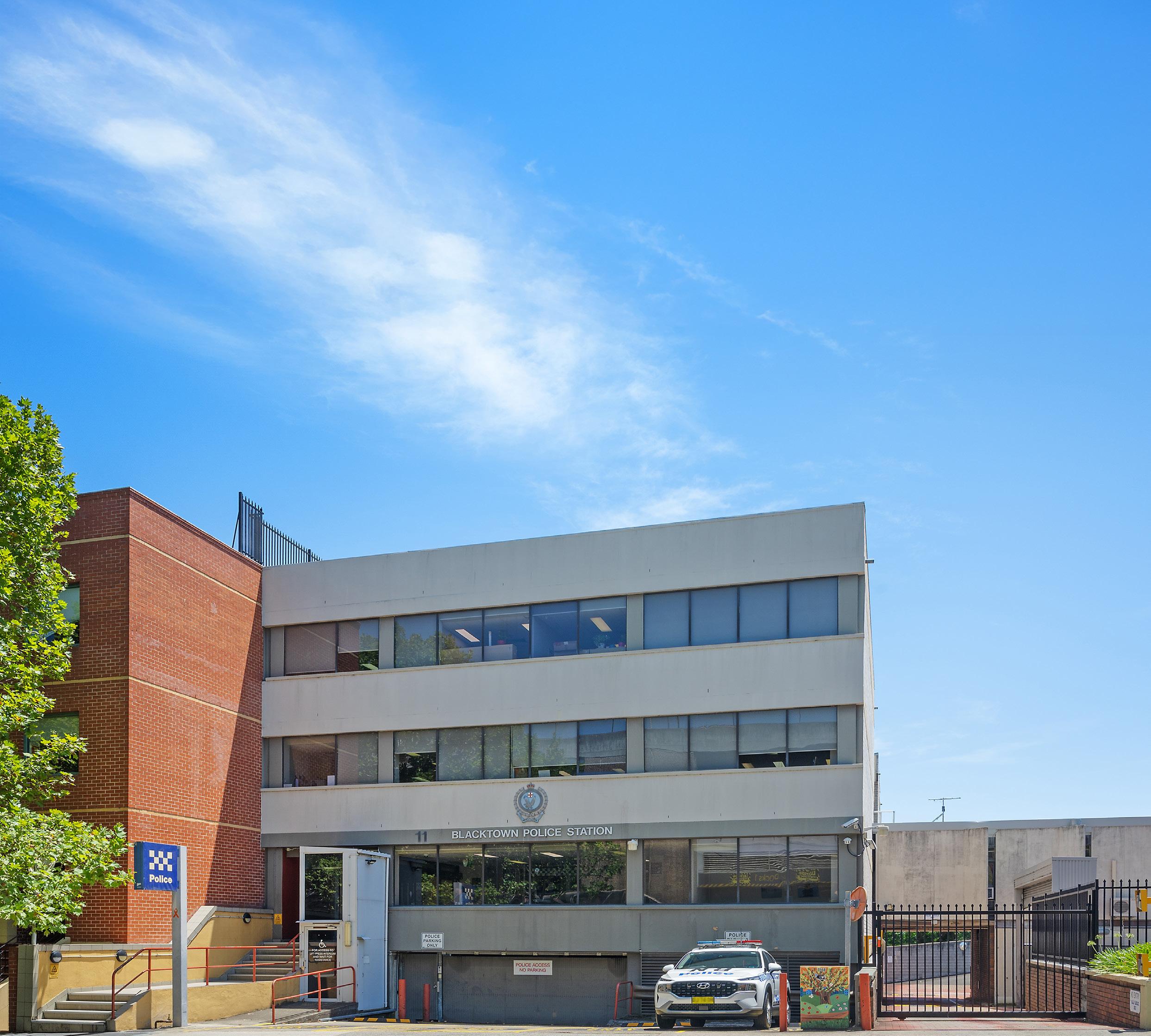
A prominent government-leased asset in Sydney’s west has changed hands, with the Blacktown Police Station selling for $16 million in a transaction that underscores continued investor interest in secure, long-term income streams.
Located at 11 Kildare Road, the property is fully leased to the NSW Government and has served as a key policing facility for the Blacktown region. The sale was facilitated through a competitive expressions of interest campaign, drawing attention from a mix of private and institutional investors.
The buyer, a private investor, was attracted by the property’s stable income profile and the essential service nature of the tenancy. The deal reflects a broader trend in the market, where investors are increasingly seeking assets with government or bluechip tenants amid a shifting economic landscape.
This transaction highlights the enduring value of well-located, securely leased assets in metropolitan growth areas, particularly those underpinned by public sector occupancy.
The asset’s appeal lay in its strong lease covenant, strategic location within one of Sydney’s fastestgrowing corridors, and proximity to major infrastructure and transport links. Blacktown’s ongoing urban renewal and population growth have further enhanced its profile as a destination for resilient commercial investment.
In a milestone transaction for Queensland’s commercial property market, Corval has completed the sale of the final component of the Gold Coast Corporate Centre in Bundall, marking the largest office deal ever recorded on the Gold Coast.
The $109 million sale of Corporate Centre One concludes Corval’s strategic divestment of the precinct, which began with the Wyndham Building’s $46.25 million sale in 2023. The 11,500 sqm Corporate Centre One building is home to 37 tenants, including major occupiers such as CBA, Findex and KPMG. The asset sits on a substantial 2.26 hectare landholding across multiple titles, offering both immediate income and long-term development potential.
CBRE’s Jack Morrison and Mark Witheriff managed the sale alongside McVay Real Estate. Mark Witheriff noted the significance of the transaction, saying, “This transaction represents the largest office transaction ever on the Gold Coast and is testament to the City of Gold Coast’s forward thinking in securing a key office investment asset with a huge surplus land holding, allowing for a multitude of future uses.”
Corval acquired the entire Corporate Centre precinct in 2017 for $89 million from Cromwell Property Group. Over the course of its ownership, the fund manager implemented a masterplan for the site, invested in targeted capital upgrades, and completed over 30,000 sqm of leasing transactions.
“Corval has been an extremely active manager of the asset over its period of ownership, taking the building from carrying longterm 20% to 30% vacancy to effectively fully occupied,” said Mark.
The transaction comes at a time when the Gold Coast office market is outperforming many capital city counterparts, with low vacancy rates and strong rental growth. “With construction prices continuing to make new office development extremely difficult and creating a lack of supply, this trend is set to continue in the medium term,” Mark added.
Oliver Picone, Chief Investment Officer at Corval, said the sale delivered returns well ahead of initial expectations. “The sale of this final component of the Corporate Centre provides our investors with a return well ahead of the initial underwrite and over a period where office investments have faced numerous challenges,” he said.
“The success of this investment demonstrates our team’s ability to acquire assets well, implement active asset management strategies and achieve strategic exits of assets when appropriate.”
As the Gold Coast continues to evolve into a more diversified economic hub, this sale underscores the growing institutional interest in the region’s commercial property sector and the value of well-executed, long-term investment strategies.
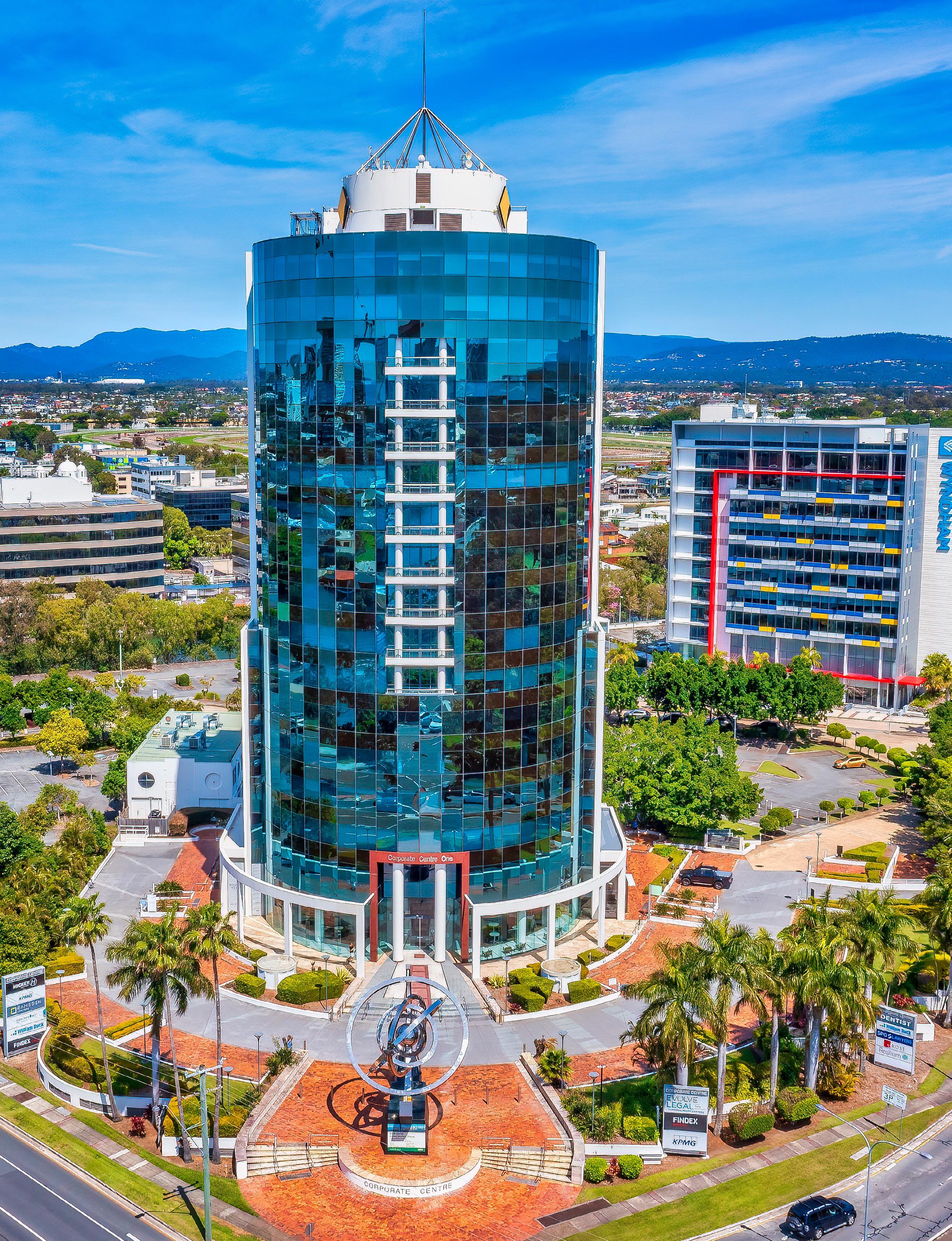
QLD Noosaville Retail Centre Changes Hands for $20.15 Million
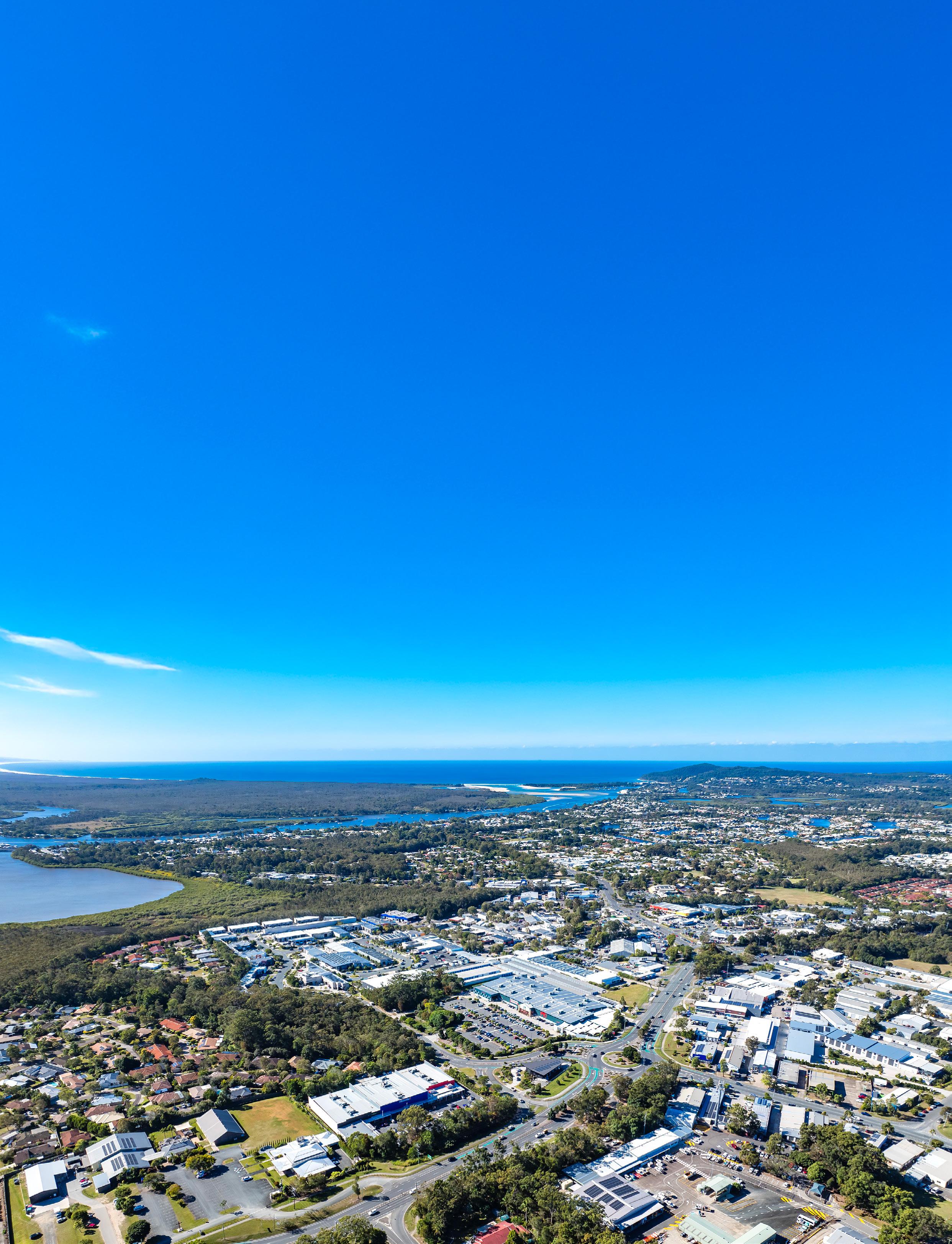
A large format retail centre in Noosaville has been sold for $20.15 million, marking a significant transaction in Queensland’s coastal retail market.
Positioned on a 1.03-hectare site along Mary Street, the fully leased asset is anchored by national tenants including The Good Guys and Supercheap Auto. The property benefits from high visibility, strong passing traffic, and proximity to Noosa’s growing residential population.
The sale campaign attracted strong interest from private and institutional investors, drawn by the centre’s
stable income profile, long lease terms, and location in a high-demand lifestyle region. The transaction reflects ongoing confidence in well-located retail assets, particularly those underpinned by essential service and household-name tenants.
As regional markets continue to attract capital, this deal highlights the resilience of large format retail and the appeal of coastal growth corridors for long-term investment.
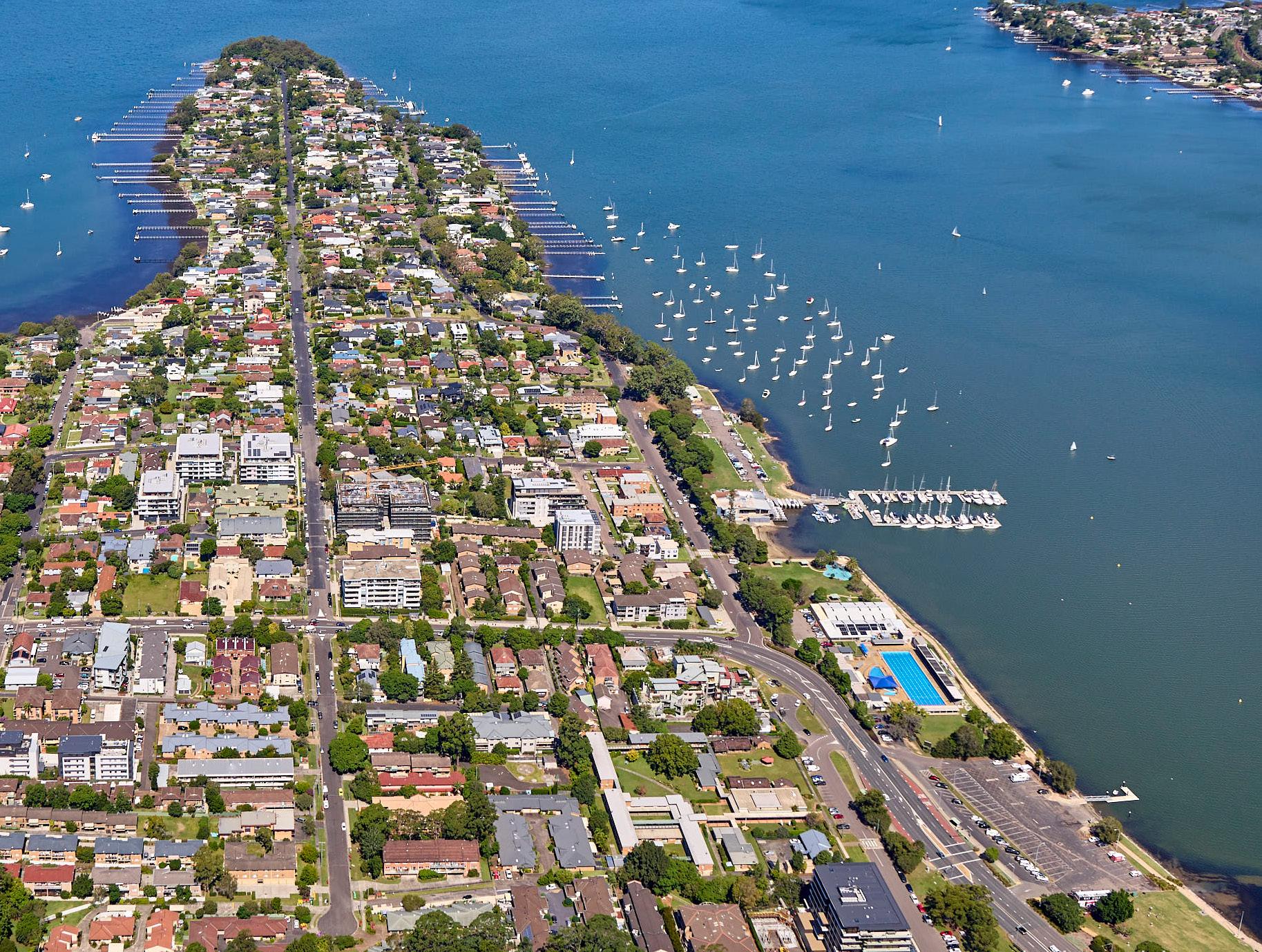
NSW Mixed-Use Site Sold in Central Coast Growth Corridor
A premium mixed-use development site in Point Frederick on the NSW Central Coast has sold for $18.65 million, underscoring continued demand for well-located coastal development opportunities.
Located on Masons Parade, the 4,514 sqm site offers dual street frontages and sweeping views over Caroline Bay. Zoned for mixed-use, the property is ideally positioned just minutes from Gosford’s CBD, waterfront precinct, and public transport, making it a prime candidate for a residential-led project with potential for ground-floor retail or commercial uses.
The site was sold by a private vendor to a local developer following a competitive sales campaign. While the property is currently vacant, its scale, zoning, and location make it one of the most significant infill opportunities in the region.
The transaction reflects growing investor confidence in the Central Coast, where infrastructure investment, population growth, and lifestyle appeal are driving renewed interest in medium and highdensity development. With Gosford undergoing a wave of revitalisation, sites like this are increasingly sought after by developers looking to capitalise on the area’s transformation.
INTELLIGENT INVESTMENT
Private Credit’s Expanding Role in Australian Real Estate Finance

Private credit is rapidly becoming a cornerstone of Australia’s real estate finance ecosystem. Once considered a niche alternative to traditional bank lending, it is now a mainstream source of capital, offering borrowers greater flexibility and speed, while delivering stable, risk-adjusted returns to investors.
According to CBRE’s latest report, Private Credit in Australian Real Estate, the sector is poised for significant growth over the next five years, driven by structural shifts in capital markets and evolving borrower needs.
A RISING SHARE OF THE CAPITAL STACK
Australia’s real estate sector is valued at over $12 trillion, with approximately $2.7 trillion financed through banks and Authorised Deposit-taking Institutions (ADIs). While private credit still represents a smaller portion of the overall market, its influence is growing rapidly. It currently accounts for a modest share of residential mortgage lending, but a substantial 26 per cent of residential development finance and a growing portion of commercial real estate debt.
This growth is being fuelled by a combination of factors. Tighter regulatory requirements have made banks more selective, particularly in sectors like residential development and transitional commercial assets. At the same time, borrowers are seeking more tailored financing solutions that can accommodate
complex deal structures, faster execution timelines and higher leverage.
“CBRE estimate that Australian real estate is funded by circa $50 billion of private credit and that this could grow to approximately $90 billion by 2029,” said Sameer Chopra, CBRE’s Pacific Head of Research.
“Private credit already provides funding for over a quarter of all residential construction in Australia, including land subdivisions, and some funds also have exposure to recent office and industrial acquisitions.”
INSTITUTIONAL CAPITAL DRIVES MOMENTUM
The rise of private credit is closely tied to the growing appetite from institutional investors. Superannuation funds, insurance companies and global asset managers are increasingly allocating capital to private credit strategies, attracted by the sector’s ability to deliver consistent income with lower volatility than equities or listed property.
CBRE projects that between $8 billion and $10 billion in new capital could be raised annually through to 2029. This influx of capital is expected to support the expansion of existing credit funds and encourage the entry of new players, including offshore managers looking to establish a foothold in the Australian market.
“Lower RBA cash rates are expected to increase the relative attraction of private credit returns,” Sameer added. “We’re also seeing growing interest from institutional capital in backing credit funds, which is helping to fuel the sector’s growth.”
STRATEGIC SHIFTS AND SECTORAL OPPORTUNITIES
While residential development remains the dominant focus for private credit, the sector is also expanding into other areas of real estate. These include transitional

office assets, industrial developments, and mixed-use projects where traditional lenders may be more cautious. Private credit is also being used for land banking, bridging finance, and recapitalisations, offering borrowers a broader range of strategic options.
The report highlights the potential for consolidation in the private credit space. Currently, the top 10 providers control around 85 per cent of the market, suggesting room for mergers, acquisitions and the emergence of new specialist lenders with sector-specific expertise.
A MATURING MARKET
As the market matures, borrowers are becoming more sophisticated in their use of private credit. Developers and asset owners are increasingly viewing it not just as a last resort, but as a strategic tool to optimise capital structures, manage risk and accelerate project timelines.
This evolution is also prompting greater transparency and professionalism across the sector. Fund managers are investing in stronger governance, risk management and reporting frameworks to meet the expectations of institutional investors and regulators.
OUTLOOK: FROM ALTERNATIVE TO ESSENTIAL
Private credit is no longer on the fringes of real estate finance. It is now a vital part of the capital stack, offering a compelling value proposition for both borrowers and investors. With strong fundamentals, growing institutional support and a clear role in addressing funding gaps left by traditional lenders, private credit is set to play a defining role in the next chapter of Australia’s real estate market.
As the sector continues to evolve, collaboration between borrowers, fund managers and institutional capital will be key to unlocking its full potential.
READ NOW
Scan for the full ‘Private Credit in Australian Real Estate’ report.

Shifting the Dial on Australia’s Housing Shortage
Australia’s housing crisis has reached a critical point. With demand far outpacing supply, affordability declining, and construction pipelines under pressure, the need for bold, coordinated action has never been more urgent.
In a recent episode of CBRE’s Talking Property podcast, titled Shifting the Dial on Australia’s Housing Shortage, industry leaders came together to explore the systemic changes required to address one of the country’s most pressing challenges.
Hosted by CBRE’s Pacific Communications Director, Kathryn House, the episode features insights from Stuart Penklis, CEO of Development at Mirvac, and Professor Mathew Aitchison, CEO of Building 4.0 CRC. Both were panellists at the Property Council of Australia’s National Housing Solutions Summit, where the message was clear: Australia must rethink how it delivers housing at scale, with speed, and with sustainability at its core.
A NATIONAL CHALLENGE DEMANDING NATIONAL COORDINATION
Australia’s housing shortfall is not a new issue, but it has intensified in recent years due to a combination of population growth, planning delays, labour shortages, and rising construction costs. The result is a system that is no longer fit for purpose.
“We need to incentivise investment, attract global capital at scale, and allow for more kinds, and all kinds of housing,” said Stuart, reflecting on the summit’s key takeaways.
The podcast underscores that this is not just a supply issue, but a structural one. It requires a shift in mindset across all levels of government and industry, with a focus on long-term planning, innovation, and collaboration.
INNOVATION AND INDUSTRIALISATION: A NEW MODEL FOR HOUSING DELIVERY
One of the most promising solutions discussed is the industrialisation of housing construction. Prefabrication, modular building, and off-site manufacturing offer the potential to reduce build times, improve quality, and lower costs. However, Australia has been slow to adopt these methods at scale.
“We need to industrialise housing delivery the way we’ve industrialised other sectors,” said Mathew. “That means investing in R&D, embracing automation, and creating a pipeline of skilled workers who can support this shift.”
Professor Mathew Aitchison advocates for the creation of a Housing Research & Development Corporation, modelled on successful initiatives in agriculture and manufacturing. Such a body could coordinate innovation, fund pilot projects, and help scale up new technologies across the housing sector.
DIVERSIFYING HOUSING TYPOLOGIES
The conversation also highlights the need to diversify Australia’s housing stock. Traditional detached homes no longer meet the needs of a growing and increasingly urbanised population. Emerging models such as build-to-rent, land lease communities, co-living, and medium-density infill offer more flexible
and affordable options, particularly for renters, downsizers, and younger Australians.
“We need to move beyond the traditional detached home and embrace a broader spectrum of housing solutions,” said Stuart. “That includes everything from micro-apartments to innovative ownership models.”
These alternative typologies are gaining traction globally, and Australia has an opportunity to learn from international best practice while tailoring solutions to local needs.
UNLOCKING CAPITAL AND STREAMLINING PLANNING
Attracting institutional capital is another key lever. Global investors are increasingly interested in residential real estate, particularly in stable, longterm rental models like build-to-rent. However, Australia must create the right policy and regulatory environment to support this investment.
The podcast also calls for streamlined planning processes, better alignment between infrastructure and housing delivery, and incentives for private sector participation. Fragmented governance and inconsistent local planning rules remain major barriers to progress.
“We need a national approach that brings together all levels of government, the private sector, and the community,” said Kathryn. “Only then can we deliver the scale of housing Australia needs.”
FROM TALK TO ACTION: A CALL FOR LEADERSHIP
The tone of the podcast is both urgent and optimistic. The tools, talent, and capital exist to solve Australia’s housing crisis, but it will require leadership, innovation, and a willingness to challenge the status quo.
“Can we fix it? Yes, we can,” Kathryn concluded. “But only if we’re willing to do things differently.”
The path forward involves embracing new technologies, diversifying housing supply, unlocking capital, and fostering a culture of collaboration. If these elements come together, Australia can not only address its housing shortage but also build a more resilient, inclusive, and future-ready housing system.

LISTEN HERE
Scan to listen to the Talking Property podcast episode: ‘Shifting the Dial on Australia’s Housing Shortage’.
HOTELS
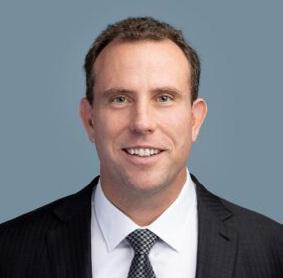
From Michael Simpson
Head of Hotels
+61 431 649 724
michaelj.simpson@cbre.com
“Robust hotel sector positioned for growth.”
• Flight capacity-led tourism growth is unlocking substantial demand gains.
• Supply growth tapering and new hotel development is constrained.
• Hotel investment market is adapting and positioned for growth.
Australia’s hotel sector is being driven by strong demand fundamentals including a flight capacity-led recovery in international visitation, a resilient domestic market and high-impact events. While investors are cautious given global macroeconomic issues and development is constrained, the fundamentals for long term growth are robust.
HOTEL SECTOR PERFORMANCE REMAINS ROBUST
Strategic air route expansion is unlocking new demand across Australia, reinforcing aviation’s role as a powerful lever for tourism and hotel market growth. Demand from China, India and Southeast Asia supported by increased air capacity is expected to drive a recovery in international visitation towards pre-pandemic levels in 2025.
Sector Spotlight
In 2024, occupancy and Revenue per Available Room (RevPAR) gains were recorded across all major markets with Sydney, Brisbane, Gold Coast and Perth leading performance. While growth has slowed in 2025, the market remains resilient with gains across all key performance indicators with Brisbane and Perth being the stand-out performers.
New Zealand’s recovery in international visitor arrivals has lagged due to flight capacity constraints from Air New Zealand’s engine issues and aircraft delays. As capacity returns, growth is expected, supported by new tourism campaigns and a favourable exchange rate.
SUPPLY GROWTH IS TAPERING AND NEW DEVELOPMENT IS CONSTRAINED
New hotel developments are being held back by rising construction costs and productivity constraints, statutory charges and planning complexities, challenging financing conditions for new developments, and rising operational costs weighing on feasibility.
In 2024, Australia’s hotel supply pipeline was impacted by project delays shifting some completions into 2025. New openings totalled 1,800 rooms, falling short of
expectations and down 54% from openings in the year prior. Currently, 5,734 rooms are under construction and set to open within the next two years.
INVESTMENT MARKET IS ADAPTING AND POSITIONED FOR GROWTH
Transaction volumes declined in 2024 due to vendor–purchaser price gaps, delayed interest rate easing, and financing barriers. A shift toward smaller, mid-tier, and regional assets led to lower deal sizes and softer initial yields. CBD opportunities remain tightly held, as longterm owners are reluctant to sell given challenges in replacing cash flow and redeploying capital.
A recovery in investment activity is expected as rates are easing and investor confidence is improving. The Australian market is attractive for its stable economic and political environment with a significant level of capital ready to re-enter the market.
The current climate favours acquisition over development, with hotels trading below replacement cost and buyers benefiting from stable income, established brands, and lower risk profiles.
With development feasibility limited outside of mixeduse projects, investor focus is shifting to refurbishment and value-add opportunities, especially for underperforming or repositionable assets. New builds are expected to target the luxury segment, where higher room rates help offset rising construction costs.
Momentum is also growing around mixed-use precincts that integrate hotels with residential, retail, or entertainment offerings, spreading risk and improving feasibility through shared value.
In New Zealand, a simplified process for approval of foreign direct investment, coupled with a reduction in funding costs and the ability to acquire assets at favourable currency exchange, is expected to stimulate market activity and enabling investors to benefit from the recovery in the market.
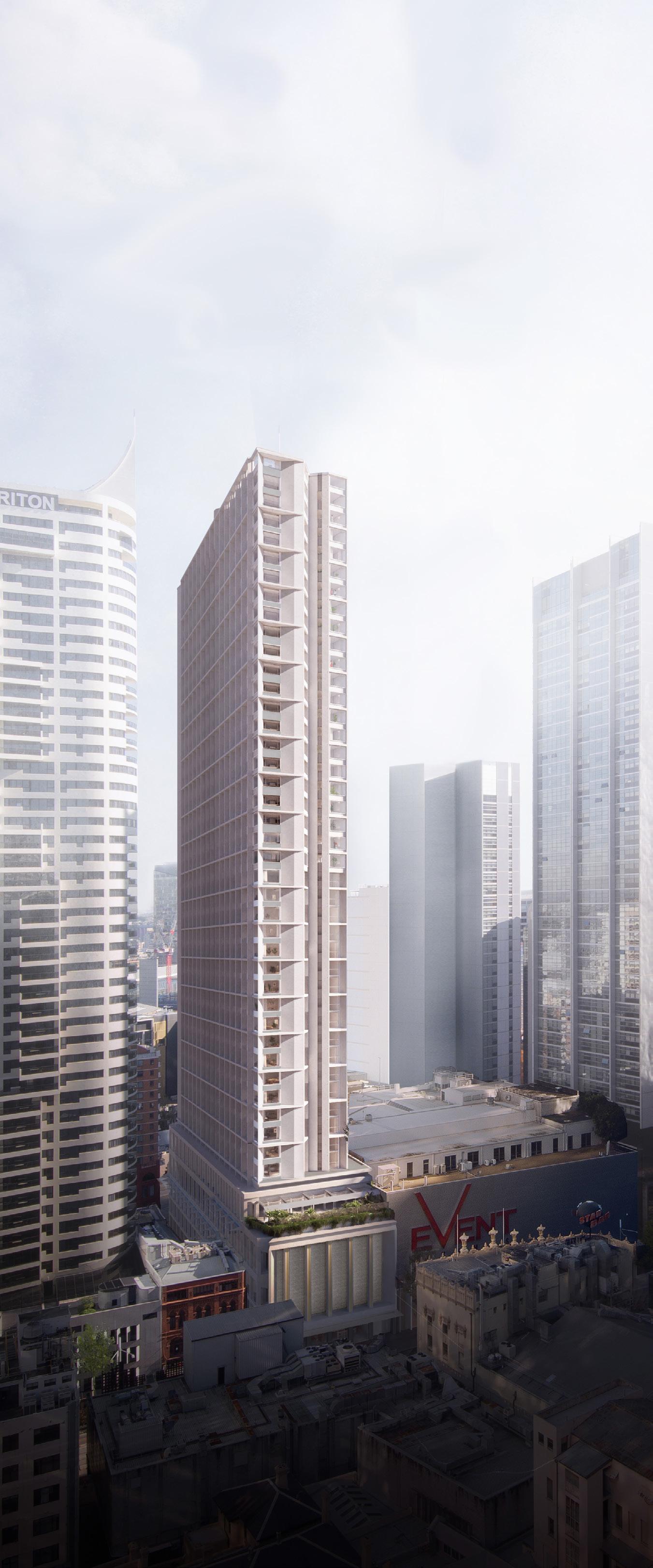
NSW Entertainment Site Hits the Market for the First Time in Over a Century
GEORGE STREET, SYDNEY
EVT has brought to market its iconic Sydney CBD property at 525 George Street, offering a rare opportunity for investors and developers to secure a premium site in one of Australia’s most dynamic urban precincts. Representing the largest mixed-use development opportunity in the CBD since the 2022 sale of One Circular Quay.
Positioned in the heart of Sydney’s entertainment and commercial core, the 1,800 sqm freehold site comes with Stage 2 Development Approval for a 43-level, 28,283 sqm mixed-use tower. The approved plans include 98 luxury apartments, a 285-room 5-star hotel, a state-of-the-art cinema complex, and vibrant retail tenancies. With direct access to Town Hall Station, Chinatown, Darling Harbour, and the Tech Central Precinct, the site is primed to become a landmark destination in Australia’s global gateway city.
“This is a generational opportunity,” said Michael Simpson. “With planning approvals in place and a strategic location that blends connectivity, culture, and commerce, 525 George Street is set to attract strong interest from institutional developers and hotel operators alike.” As Sydney’s residential and tourism markets continue to rebound, the project is expected to meet surging demand for high-end urban living and premium hospitality experiences.
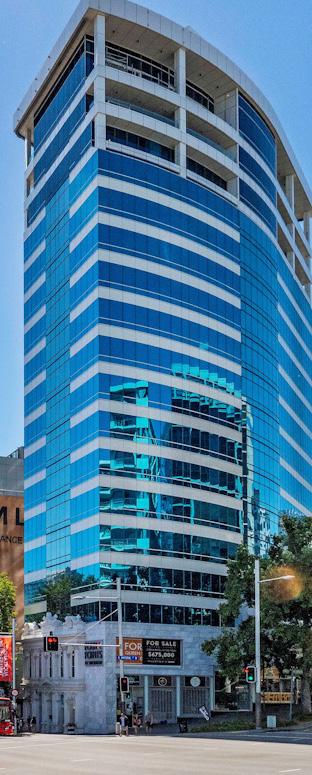
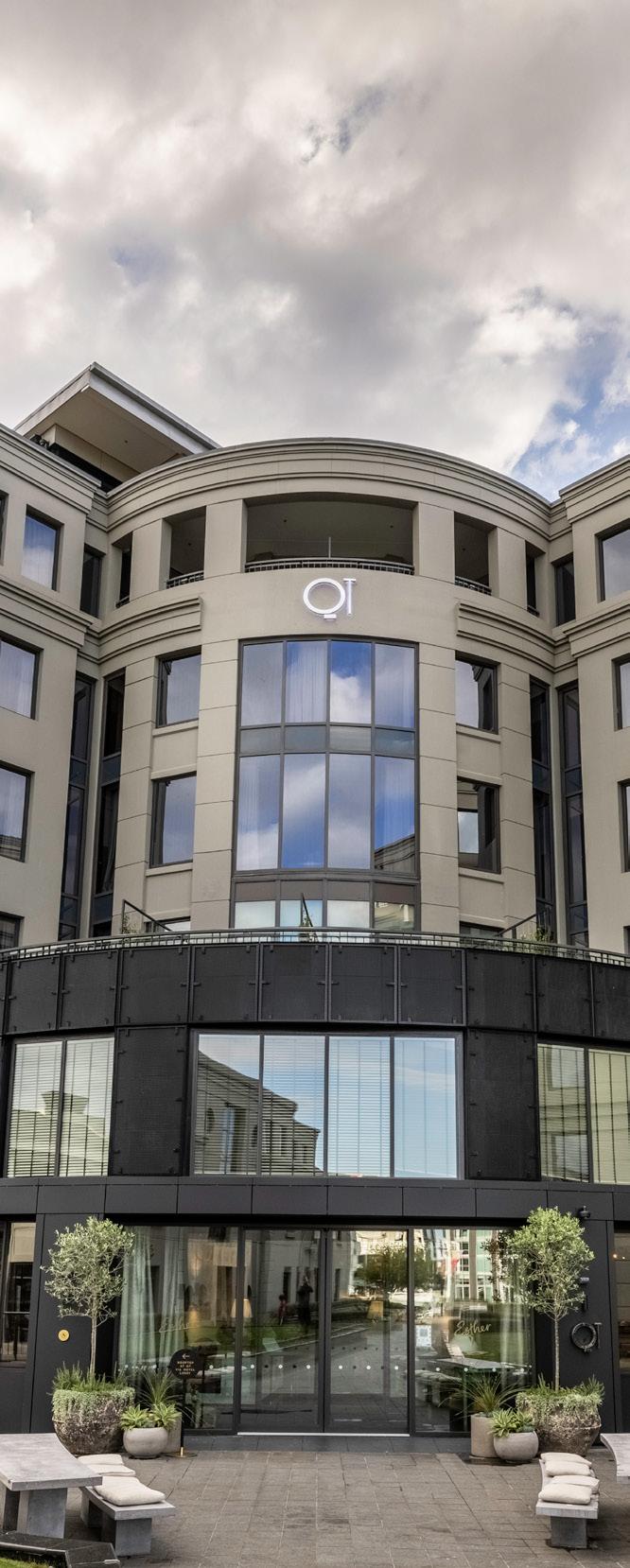
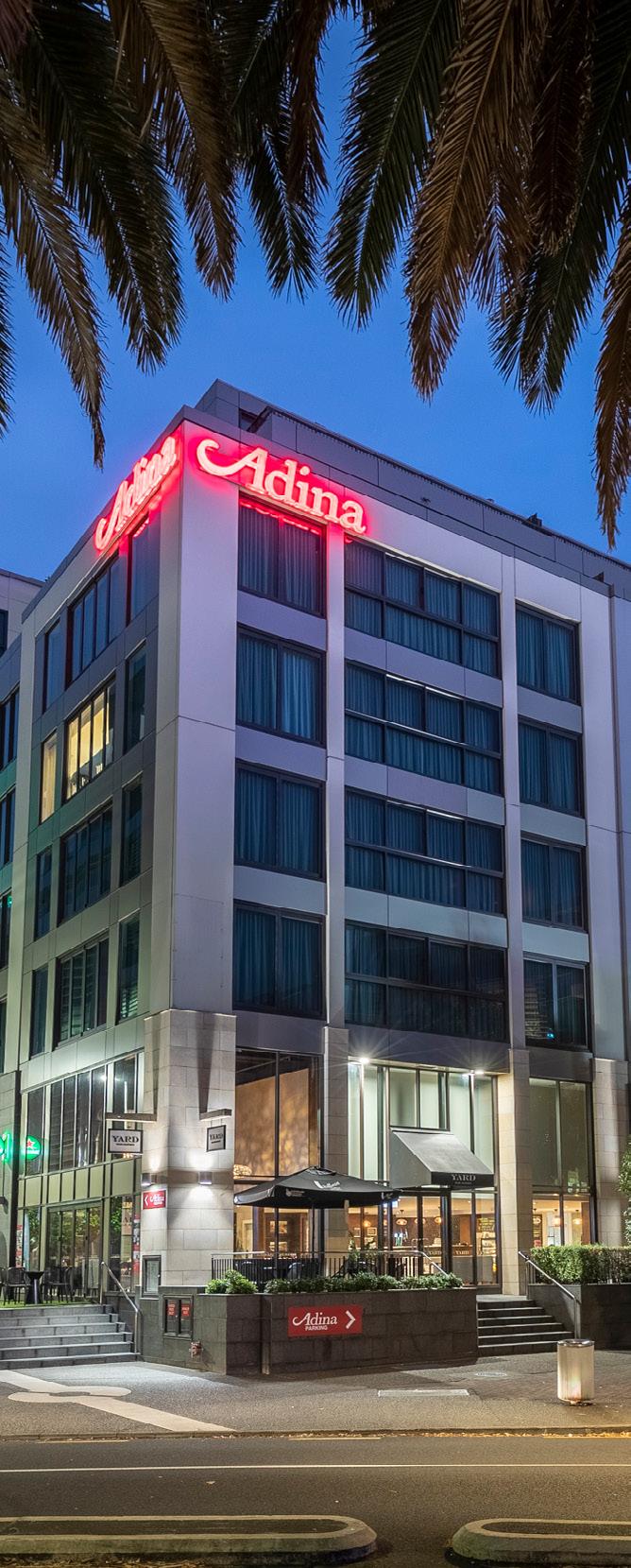

A Generational Offering: NZ’s Largest Hotel Portfolio Hits the Market
In a defining moment for New Zealand’s commercial real estate and tourism sectors, NZ Hotel Holdings (NZHH) has announced the sale of its entire nationwide hotel portfolio. This is the largest and most comprehensive hotel offering ever brought to market in the country. It presents a once-in-a-generation opportunity for investors to gain immediate scale, geographic diversity, and access to a suite of highperforming, investment-grade assets across New Zealand’s most sought-after tourism and business destinations. CBRE’s Michael Simpson, Peter Hamilton and Nick Hill are managing the sale via an International Expressions of Interest campaign.
NZHH was established in 2019 as a strategic partnership between the NZ Super Fund, the Russell Group of Companies and the Lockwood Property Group. The group’s mission was to develop and operate premium hotel assets that support the long-term growth of New Zealand’s tourism economy. The result is a portfolio that has been meticulously curated, seismically strengthened and professionally managed to deliver strong performance across all market segments. The offering includes seven prominent hotels:
• Four Points by Sheraton Auckland – A contemporary, internationally branded hotel in the heart of Auckland’s CBD, offering 255 rooms and extensive conference facilities.
• QT Auckland – A luxury lifestyle hotel known for its bold design, rooftop bar and waterfront location in the Viaduct Harbour precinct.

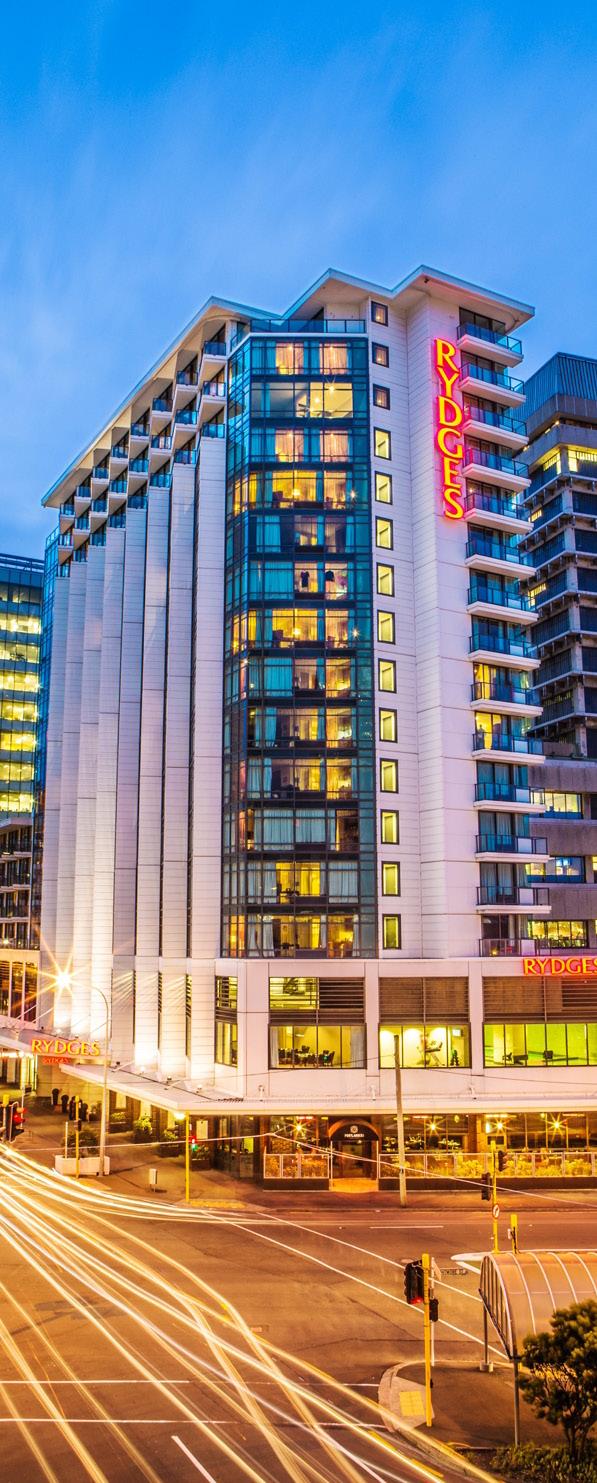
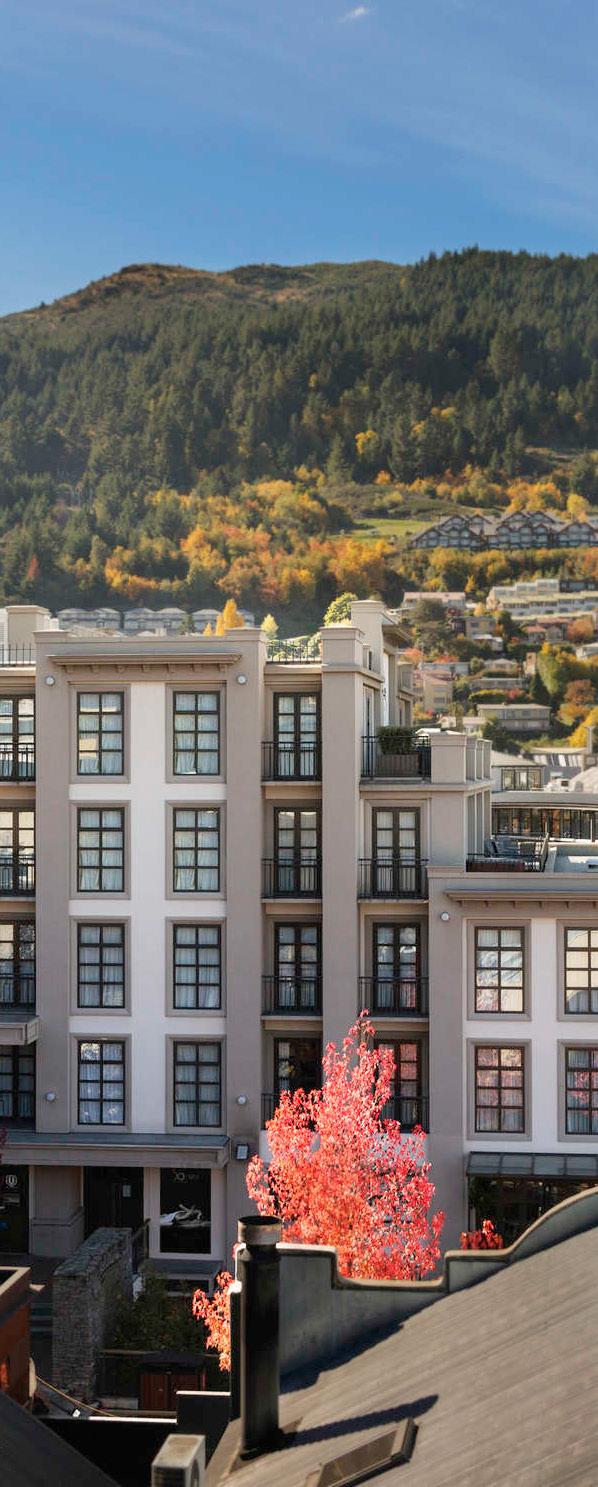
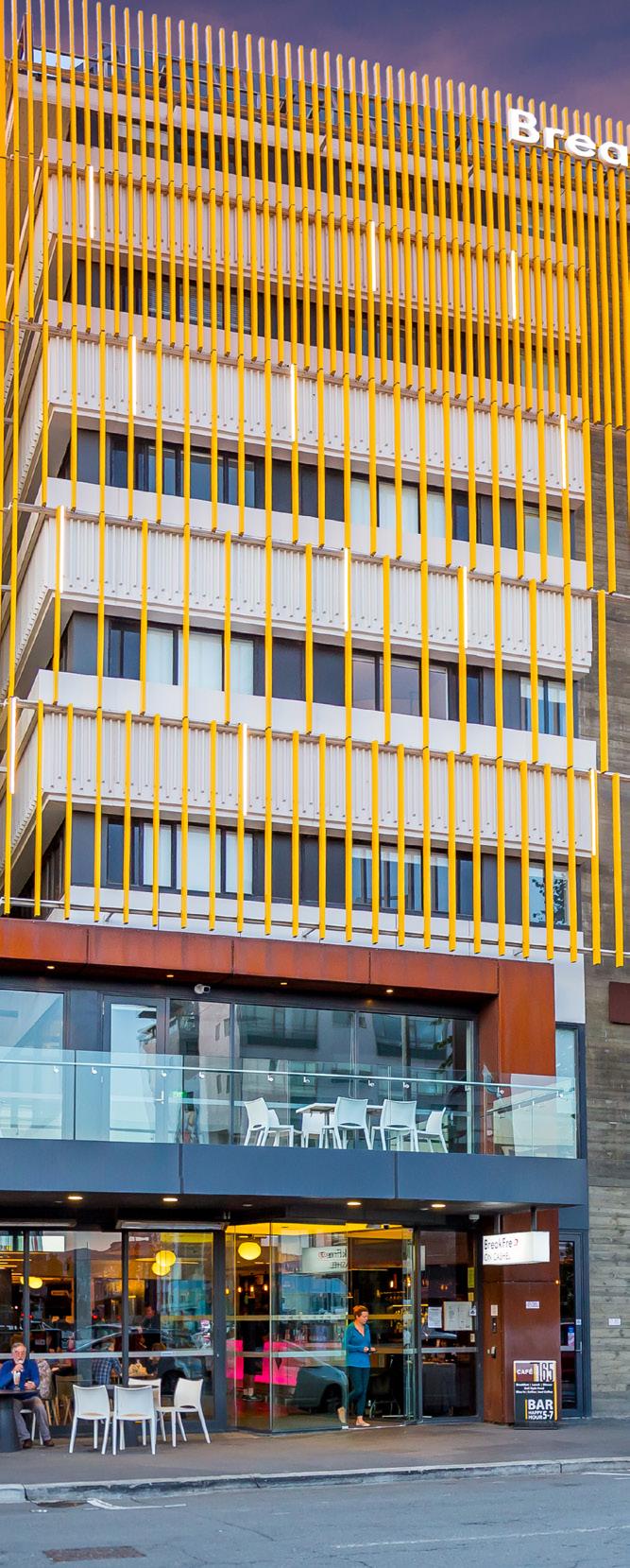
• Adina Apartment Hotel Britomart – A flexible, apartment-style hotel catering to extended-stay guests and corporate travellers.
• Rydges Rotorua – A well-established hotel in one of New Zealand’s most visited tourist destinations, near geothermal attractions and Māori cultural sites.
• Rydges Wellington – A strong performer in the capital, serving government, corporate and leisure guests.
• Sofitel Queenstown Hotel and Spa – A luxury alpine retreat offering 82 rooms and suites, a full-service spa and premium dining.
• BreakFree on Cashel, Christchurch – A high-occupancy, design-forward hotel offering affordable accommodation in a central location.
“This is a truly generational offering,” said Michael Simpson. “The portfolio provides expansive coverage of New Zealand’s major tourism and business markets, with assets that appeal to a wide range of traveller demographics. It’s a rare chance to acquire a fully de-risked, high-quality portfolio in a country with strong tourism fundamentals and global appeal.”
The sale comes at a time of renewed momentum in New Zealand’s tourism sector. The government has launched targeted international marketing campaigns in high-value source markets such as India, China and the United States, while increasing funding to support tourism infrastructure and regional development. Tourism, once New Zealand’s largest export earner, is firmly back on a growth trajectory, with international arrivals and visitor spending expected to surpass pre-pandemic levels in the coming years.
NZHH Chief Executive Marcus Reinders noted that the divestment aligns with the group’s long-term strategy to recycle capital into new development opportunities. “With tourism now back on a growth curve and strong international interest in New Zealand’s hotel sector, the time is right to pass on this portfolio to an investor seeking scale, geographic diversity and holistic coverage of the country’s key tourism markets,” he said.
The offering follows recent benchmarks such as the record-setting sale of the InterContinental Auckland Hotel, reinforcing investor confidence in the resilience and long-term potential of New Zealand’s hotel market. With its combination of strategic locations, brand diversity and operational excellence, the NZHH portfolio is expected to attract strong interest from global hotel operators, institutional investors and sovereign wealth funds.
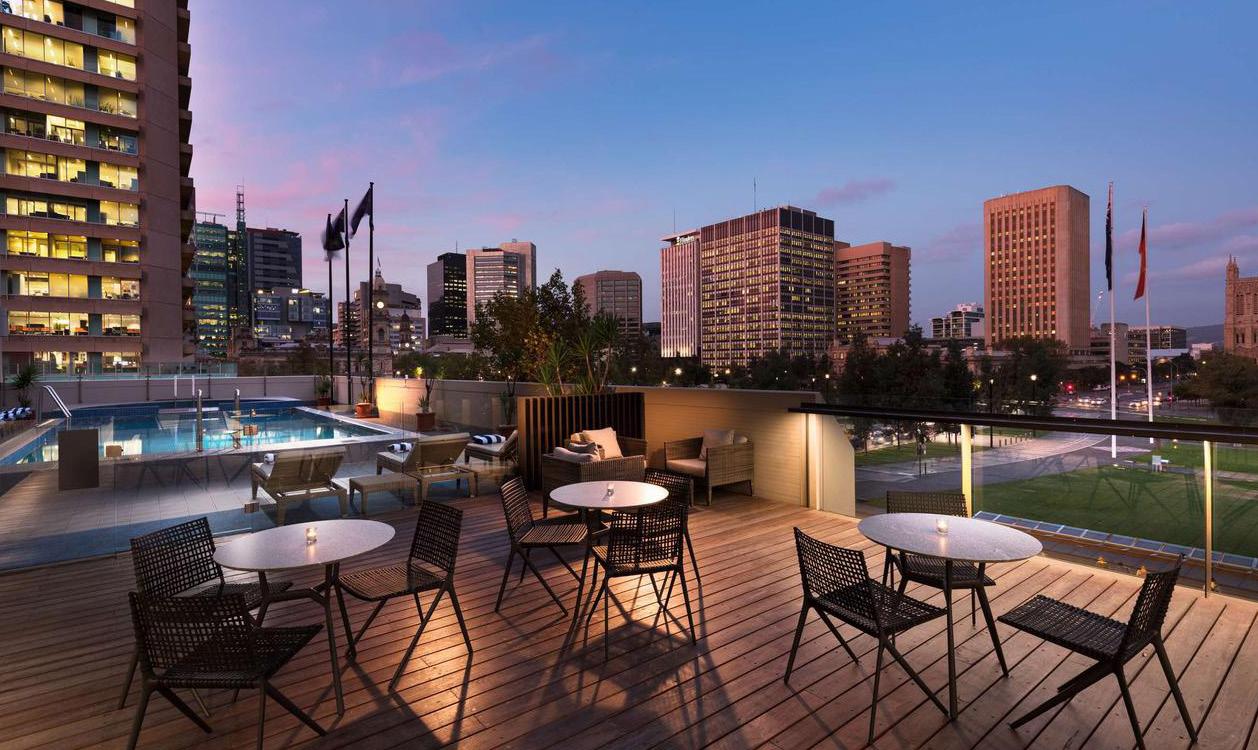
SA
Amora Hotels & Resorts Expands Australian Footprint with Hilton Adelaide Acquisition
VICTORIA SQUARE, ADELAIDE
Amora Hotels & Resorts has acquired the Hilton Adelaide, marking the group’s entry into the South Australian market and continuing its expansion across key Australian cities. The transaction is the first change of ownership for the landmark hotel in more than 30 years.
Located at 233 Victoria Square in Adelaide’s CBD, the five-star hotel occupies a 3,556 sqm freehold site and features 377 guest rooms, 20 conference and meeting spaces, a business lounge, tennis court, gymnasium and swimming pool. It also includes two established food and beverage venues, COAL Cellar + Grill and The Collins Bar, and is currently operated by Hilton Hotels of Australia.
The acquisition aligns with Amora’s strategy to grow its presence in major capital cities, complementing its existing hotels in Sydney, Melbourne and Brisbane. Owner Earp Siriphatrawan said the group sees strong potential in Adelaide’s evolving tourism and business landscape.
The sale comes amid significant investment in the city, including the Royal Adelaide Hospital, the Australian Bragg Centre and the Central Market Arcade redevelopment, all expected to support future demand for quality accommodation.
michaelj.simpson@cbre.com
tom.gibson@cbre.com
Seventy-Three to One: Major Sydney Hotel Amalgamation
Finalised
SPRINGFIELD AVENUE, POTTS POINT
Tom Gibson
+61 437 538 888 tom.gibson@cbre.com
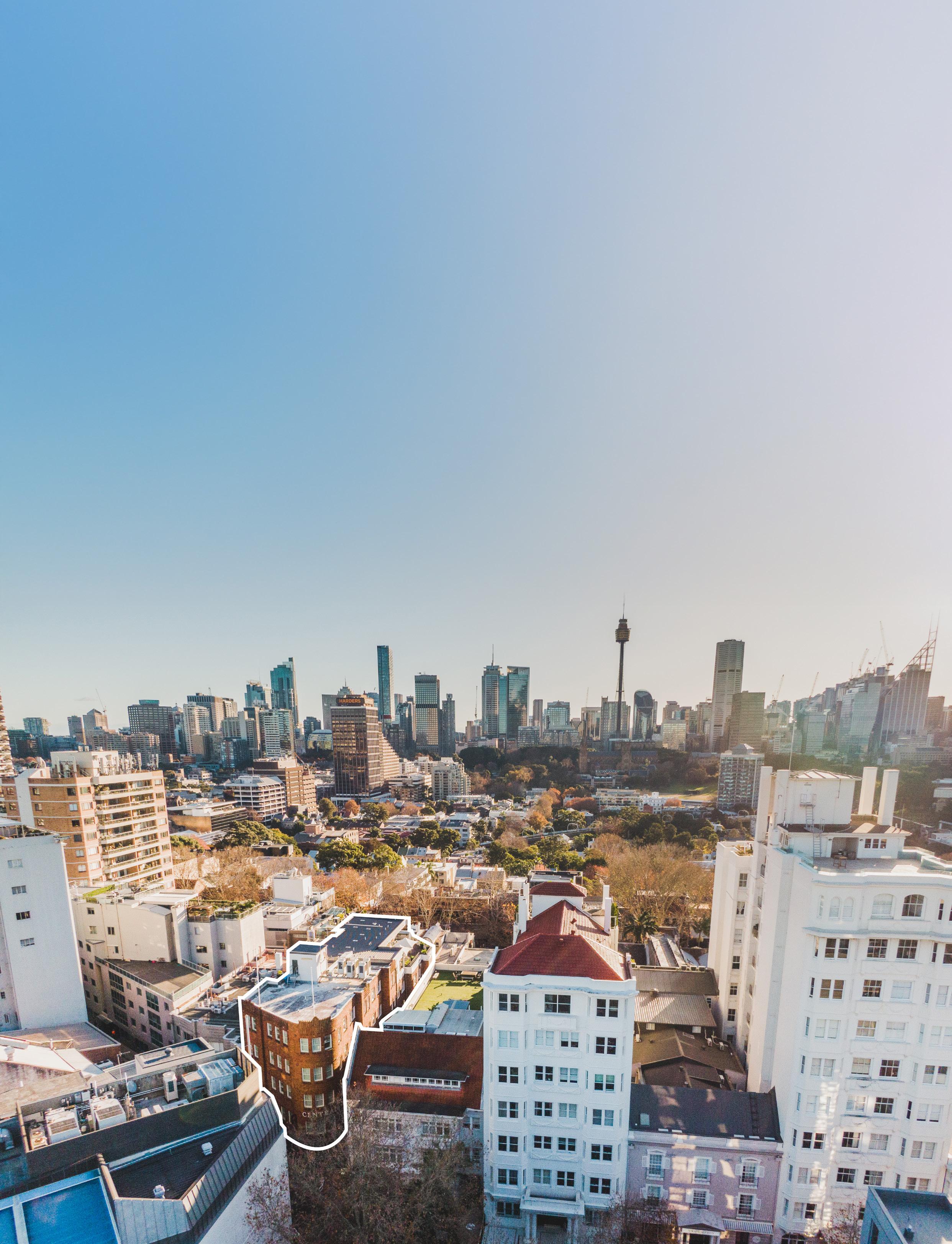
Angus Windred
+61 400 354 295 angus.windred@cbre.com
The Potts Point Central Apartment Hotel in Sydney has been sold for $31.5 million to global multi-manager BGO Strategic Capital Partners and Sydney-based Hotel Capital Partners.
The transaction involved the amalgamation of 73 individual strata lots, making it the largest brokered strata hotel deal in Australia since the onset of the pandemic.
Located in one of Sydney’s most tightly held precincts, the 4-star hotel comprises 70 serviced apartments, a ground floor food and beverage outlet, and a rooftop public space offering expansive views of the CBD. The property was sold as a freehold going concern with vacant possession, providing the incoming owners with flexibility for repositioning, refurbishment or future redevelopment.
The sale campaign generated strong interest from a broad range of buyer groups, including developers, private investors and owner-operators. More than 150 enquiries were received, resulting in 15 formal bids. The high level of engagement reflects ongoing demand for well-located hotel assets in Sydney, particularly those with scale and long-term potential.
Tom Gibson noted the complexity of coordinating the interests of 73 separate owners and acknowledged the cooperation of all parties involved. “This was a detailed and carefully managed process, and we’re pleased with the outcome achieved for all stakeholders,” he said. Angus Windred added that the nature of the offering, combined with its location and flexibility, contributed to the competitive bidding environment.
The transaction highlights the resilience of Australia’s hotel investment market and the continued appeal of Sydney as a destination for both domestic and international capital.
FUTURE CITIES
Where Purpose Meets Partnership: CBRE’s Public Sector Strategy
When the right people come together with a shared purpose, meaningful outcomes follow. That’s the approach driving CBRE’s Ash Nicholson and Fatima Mohamed as they help bridge the gap between government and the commercial real estate sector—unlocking opportunities that benefit communities, investors, and the broader economy.
DATA-DRIVEN STRATEGY MEETS MARKET INSIGHT
As Director of Government & Industry in Sydney, Ash Nicholson works closely with NSW government clients and peak industry bodies. With a background in brand strategy and a passion for place-making, she brings a fresh perspective to complex public-sector projects.
“Data informs everything we do,” Ash says. “Our access to global insights, combined with local execution capability, gives us a unique edge. We’re able to apply international best practice to local challenges and deliver commercially viable, community-focused outcomes.”
In Melbourne, Fatima Mohamed leads CBRE’s Government Engagement team, drawing on nearly two decades of public sector experience. She understands the rigour and accountability that underpin government decision-making— and how to align that with private sector innovation.
“Government needs data to justify investment and demonstrate transparency,” Fatima explains. “That’s where CBRE adds value. We bring credibility, evidence, and a commercial lens to public projects.”
ALIGNING INTERESTS TO UNLOCK VALUE
Both Ash and Fatima emphasise the importance of genuine collaboration. For them, successful partnerships are built on shared priorities, mutual respect, and a clear understanding of the commercial and community outcomes.
“A strong partnership is win–win,” Ash says. “It’s about aligning public and private stakeholders around a common vision—whether that’s a precinct strategy, infrastructure investment, or adaptive reuse of underutilised assets.”
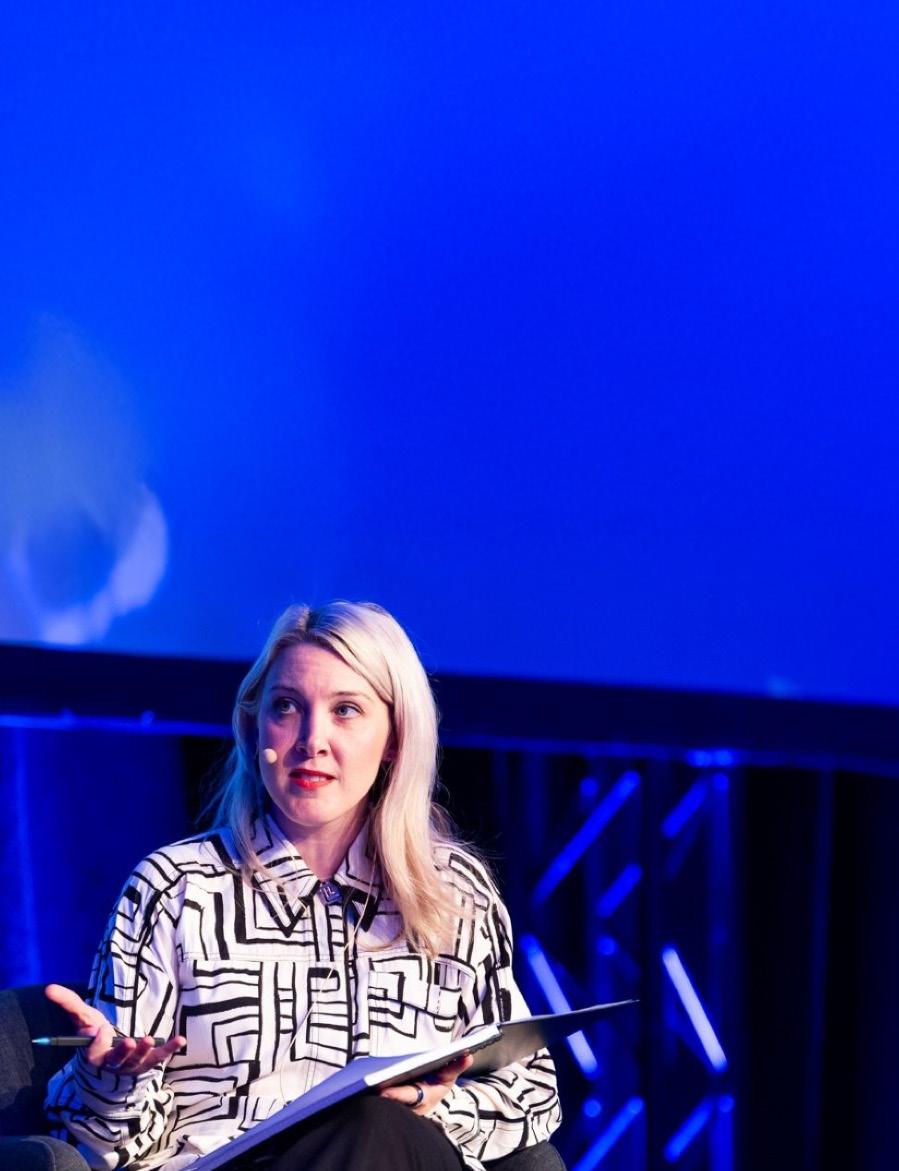
READ
Scan for the full ‘Powerful Partnerships’ report.
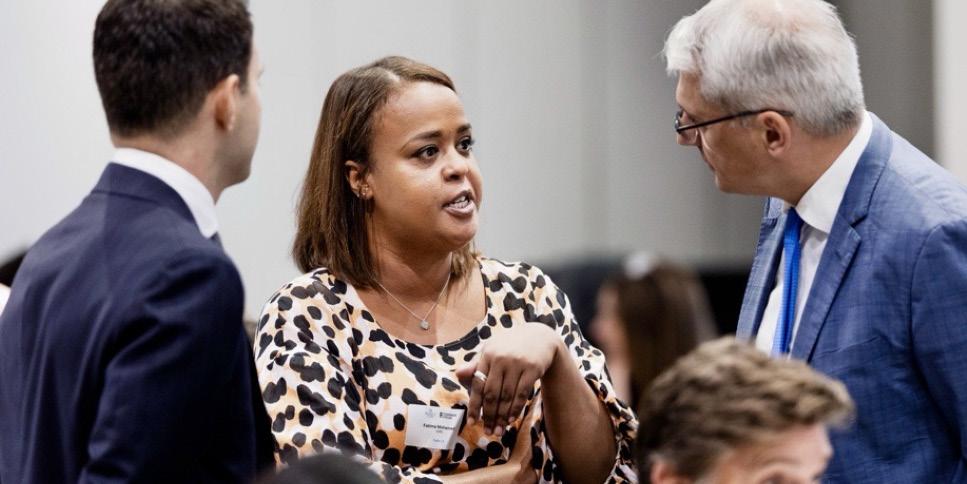
Fatima adds that early engagement is key to unlocking flexibility and innovation.
“When we’re involved early, we can help shape the brief, identify negotiables, and ensure both sides are aligned. That’s how we deliver high-quality outcomes that stand the test of time.”
REIMAGINING ASSETS AND PRECINCTS
With major infrastructure projects underway in Sydney and Melbourne, both see significant opportunities in transport-linked precincts and asset repositioning.
“In Western Sydney, the Metro extension and Bradfield City development are gamechangers,” Ash says. “There’s huge potential for industrial, logistics, and mixed-use development around the new airport.”
She also highlights the need to rethink ageing CBD assets.
“With limited new supply, we need to reimagine existing buildings—whether that’s through sustainability upgrades, adaptive reuse, or activating ground-floor retail to drive 24-hour vibrancy.”

Fatima agrees, noting that successful precincts go beyond buildings.
“It’s about creating places people want to be. That means integrating transport, retail, culture, and accommodation to create a destination—not just a development.”
A PLATFORM FOR PROGRESS
Ash and Fatima are passionate about the role commercial real estate can play in shaping better cities. By connecting government priorities with private capital and development expertise, they’re helping to deliver projects that are not only investable, but impactful.
“We’re here to help investors and developers navigate government priorities and unlock opportunities that deliver long-term value,” Ash says.
“It’s about finding common ground,” Fatima adds. “When public and private sectors work together, we can create places that perform—economically, socially, and environmentally.”
AGRIBUSINESS

From John Harrison
Head of Agribusiness
+61 404 335 267
john.harrison@cbre.com
Sector Spotlight
“Agribusiness
becoming core within portfolios.”
• Challenging conditions and global trade shaping cautious market behaviour.
• Investor interest is growing in natural capital, almonds, poultry, and watersecure assets.
• Australia remains a stable, strategic destination for long-term agricultural investment.
In the first half of 2025, a number of challenges have emerged for farmers across the country. Weather conditions continue to play a significant role, with dry conditions in parts of southern and western Australia causing concern for farmers feeding livestock and preparing with uncertainty for the winter cropping season. In the north, floods and cyclones have caused heartache and major challenges for producers.
In recent weeks, parts of Victoria and South Australia have enjoyed welcome rainfall, renewing hope and optimism for the season ahead.
In addition to recent weather challenges, the United States’ tariff announcement in April sparked uncertainty across global markets. The effects on Australian agricultural exports are not yet known, though there may be some benefit, as Australian products have avoided much higher tariffs compared to the US’s other major trade partners.
Recent rate cuts have been a welcome relief for borrowers, though we are yet to see this translate to increased buyer activity in the agri property sector, with buyers remaining cautious given recent seasonal challenges.
The market is very fragmented at the moment, with certain commodities that generate immediate cashflow returns for investors being well-sought after. Examples of these types of assets include almonds, poultry and row cropping properties that are best in class or underpinned with favourable offtake agreements. There has also been a flight to quality, with top-tier properties attracting sound interest, whereas those second and third tier assets spending considerably longer on market.
As international markets navigate geopolitical risk, economic division and uncertainty around US trade agreements, institutional investors are reconsidering how and where to allocate funds.
The Australian agricultural market continues to emerge as a stable destination for long-term capital, given its political stability, proximity to Asian markets and reputation for producing high-quality export products. Australia’s rich natural resources and sustainability credentials also appeal to investors.
Some of the largest institutional investors are recognising that in markets like Australia, natural capital assets (land and water) remain undervalued relative to their long-term utility and strategic importance. Agriculture is no longer seen as a fringe investment sector; it is becoming core within portfolios.
Offshore pension funds, particularly North American and more recently European, have led the charge, with Australian superannuation funds now following, drawn by the sector’s alignment with long-term sustainability, risk diversification and natural capital strategies.
Demand from high net worth privates and family farming groups is subdued, though there are recent examples of family groups contesting strongly for assets offering strategic growth, particularly neighbouring add-on opportunities. This buyer group is expected to become more active in the second half of 2025 if interest rates fall further and seasonal conditions improve.
VIC Rare Murray River Holding Hits the Market
MURRAY RIVER REGION
A rare opportunity to acquire one of northern Victoria’s most iconic rural estates has emerged, with Ulupna Island Station now listed for sale.
Situated on the banks of the Murray River, the 731 hectare property spans 12 titles and offers a unique combination of irrigation, dryland farming, and exclusive river frontage. Located in one of Victoria’s most productive agricultural regions, the station is expected to attract strong interest from a broad range of buyers.
“This is a landmark offering in the region,” said John Harrison. “Ulupna Island Station combines highly productive soils, reliable water access, and an enviable Murray River lifestyle, creating a truly unique investment opportunity.”
The property includes approximately 91 hectares developed to fixed sprinkler and flood irrigation, and around 505 hectares of arable dryland. Fertile soils range from clay to sandy loams, complemented by level to undulating topography.

James Beer noted, “The property’s diverse agricultural capabilities, coupled with its stunning natural surrounds and high-quality infrastructure, make it ideally suited for a variety of rural pursuits, including livestock breeding and grazing, cropping, and equine enterprises.”
Infrastructure highlights include a beautifully renovated three-bedroom residence set among established gardens, an undercover entertaining area, extensive workshop and machinery shedding, steel cattle yards, a treelined limestone driveway, an all-weather airstrip, and a helipad with a high-flow water point.
Despite its seclusion, the property is just minutes from key Goulburn Valley and Riverina centres and only a 2.5-hour drive from Melbourne.
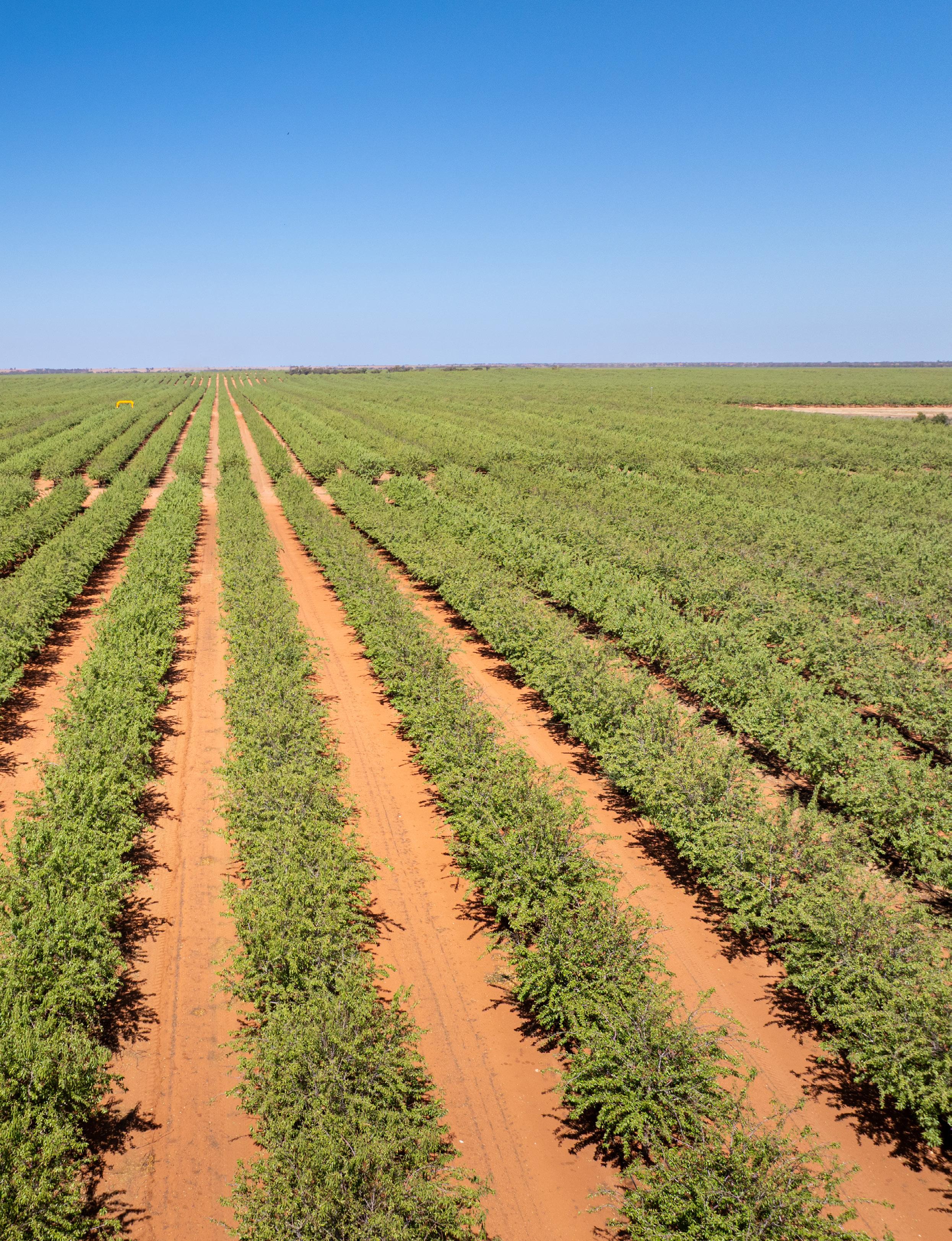
A major institutional-grade horticulture portfolio spanning four states is on the market, with strong interest anticipated from both domestic and international investors.
Known as Keyes Ag, the 4,803 hectare portfolio comprises large-scale almond and avocado operations located in some of Australia’s most highly regarded agricultural regions, including New South Wales, Victoria, Queensland and Western Australia.
“This is a unique, institutional-scale opportunity, providing diversification across several commodity types and locations,” said John Harrison. “We expect interest from a range of purchasers, including domestic and international funds, private equity groups and fresh produce companies.”
The portfolio includes a significant volume of both ground and surface water entitlements, supporting long-term productivity and future development. Each property is equipped with extensive irrigation and filtration infrastructure, along with staff accommodation, site offices, workshops and machinery sheds.
James Beer added, “The age profile of the orchards offers an incoming purchaser the ability to benefit from significant increases in production. Several properties are also well-located near processing infrastructure and major population centres, with further development potential supported by existing infrastructure.”
The portfolio includes:
• Cavour (Euroley, NSW): 733 ha with 497 ha planted to almonds
• Wallaroo (Darlington Point, NSW): 314 ha with 236 ha planted to almonds
• Thurla (Red Cliffs, VIC): 2,682 ha with 565 ha planted to almonds
• Little Jalisco (Arriga, QLD): 588 ha with 287 ha planted to avocados
• Arbusto & Boston Park (Karakin, WA): 486 ha with 214 ha planted to avocados
These assets represent a rare opportunity to acquire a geographically diverse, commercialscale horticulture enterprise with strong fundamentals and long-term growth potential.
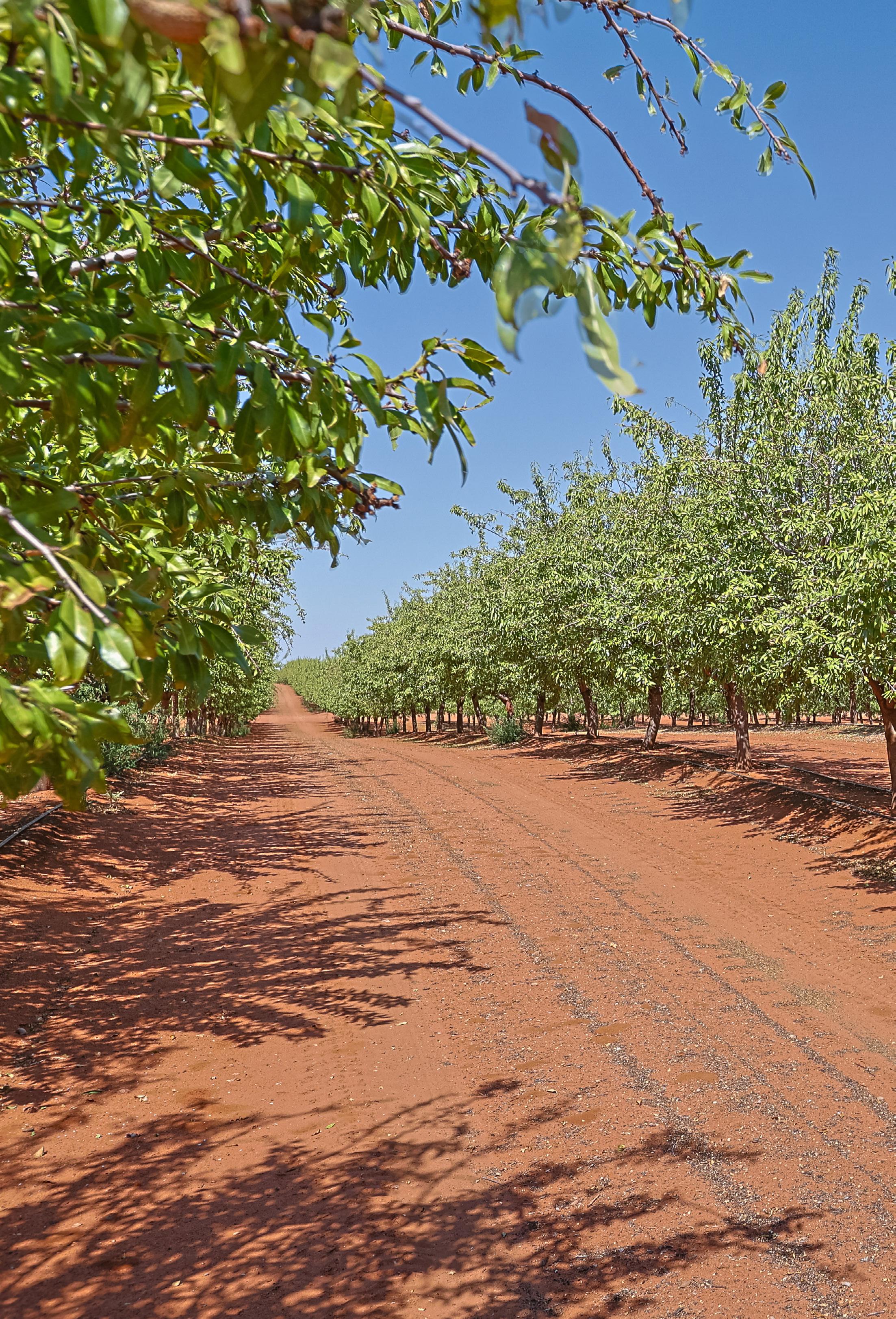
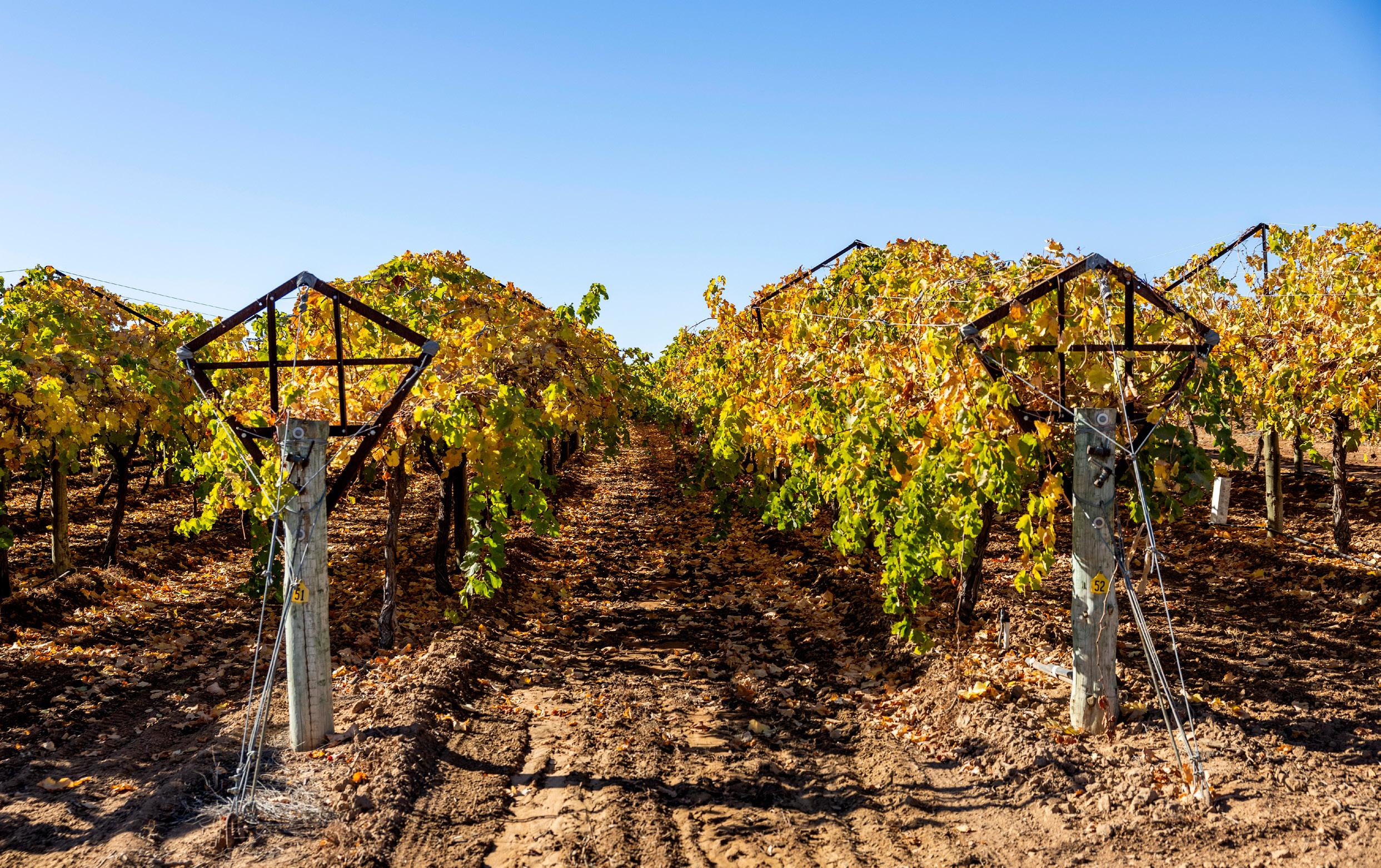
VIC Vineyard with Market Access and Expansion Potential on Offer
Angus Bills
+61 400 859 634
angus.bills@cbre.com.au
Matt Childs
+61 418 512 494
matt.childs@cbre.com
A long-standing, family-owned table grape enterprise in Victoria’s Sunraysia region has been listed for sale, offering a rare opportunity to acquire a turnkey horticultural operation with strong export credentials.
Located at 3784 Walnut Avenue, Koorlong, the 888 Produce property spans 64.31 hectares across three titles, with the majority planted to premium table grape varieties. The enterprise has been operating for over 30 years and is positioned to deliver immediate production and market access.
“This is a genuine turnkey opportunity to enter the table grape industry at scale,” said Angus Bills. “The property features sought-after plantings and benefits from early harvesting, allowing access to premium pricing in both domestic and export markets.”
The vineyard has been strategically developed to meet market demand, with varieties selected for both local and international appeal. The property also benefits from a strong reputation for quality, supported by an exclusive licensing and marketing agreement with Bloom Fresh.
Supporting infrastructure includes 25-person workers accommodation, three machinery sheds, a site office, and extensive storage and packing facilities, including four cool rooms, a fumigation facility, and additional sundry shedding.
“The property has been exceptionally well managed and offers further expansion potential, with neighbouring land parcels suited for development,” Angus added.
Water security is a key feature, with a pressurised supply via the Lower Murray Water Benetook System and 35ML of on-farm dam storage.
888 Produce is located approximately 5km west of Mildura Airport, 10 kilometres southwest of Mildura, and 387 kilometres northeast of Adelaide.
CREATING RESILIENCE
Why Agribusiness is Australia’s Quiet Investment Giant
Agribusiness has quietly become one of Australia’s top-performing property sectors, outpacing traditional asset classes with a 256% rise in property values over two decades. In CBRE’s Talking Property podcast, experts unpacked why this sector is now firmly on the radar of institutional investors.
RESILIENCE IN UNCERTAIN TIMES
Agribusiness has shown remarkable stability through economic turbulence. Kathryn House, CBRE’s Pacific Communications Director, opened the episode by highlighting agriculture’s performance: “It might surprise you that it was agriculture, following a massive 256% spike in property values.”
Brad Wheaton, Co-Founder and Managing Director of Gunn Agri Partners, added, “Food doesn’t go out of fashion. It’s a necessity, and that makes agribusiness a fundamentally defensive asset.”
INSTITUTIONAL CAPITAL TAKES NOTICE
The sector is no longer dominated by family farms. Institutional investors, including super funds and global capital, are now backing large-scale agribusiness operations. Wheaton noted that Gunn Agri Partners, backed by the Clean Energy Finance Corporation and Canadian pension giant CDPQ, manages over 2.6 million acres and $800 million in assets.
CBRE Agribusiness, explained, “We’re seeing a shift toward professionalised, techenabled operations that offer transparency and scale. That’s what institutional investors are looking for.”
SUSTAINABILITY AND CARBON OPPORTUNITIES
Agribusiness is uniquely positioned to contribute to climate goals. CBRE emphasised the sector’s role in carbon sequestration and biodiversity: “Agribusiness is at the heart of the natural capital conversation. It’s not just about food production anymore—it’s about environmental stewardship.”
Carbon farming and biodiversity credits are emerging as new revenue streams, adding to the sector’s appeal.
TECHNOLOGY IS DRIVING EFFICIENCY
From drone surveillance to AI-powered crop forecasting, technology is transforming agribusiness. Brad highlighted how innovation is helping address labour shortages and climate variability: “Tech is making operations more efficient and less risky, which is critical for long-term investment.”
LOOKING AHEAD
As global food demand grows and sustainability becomes central to investment strategies, agribusiness is poised for continued expansion. With its blend of resilience, innovation and environmental impact, the sector is no longer a quiet achiever, it’s a rising star in the property investment universe.
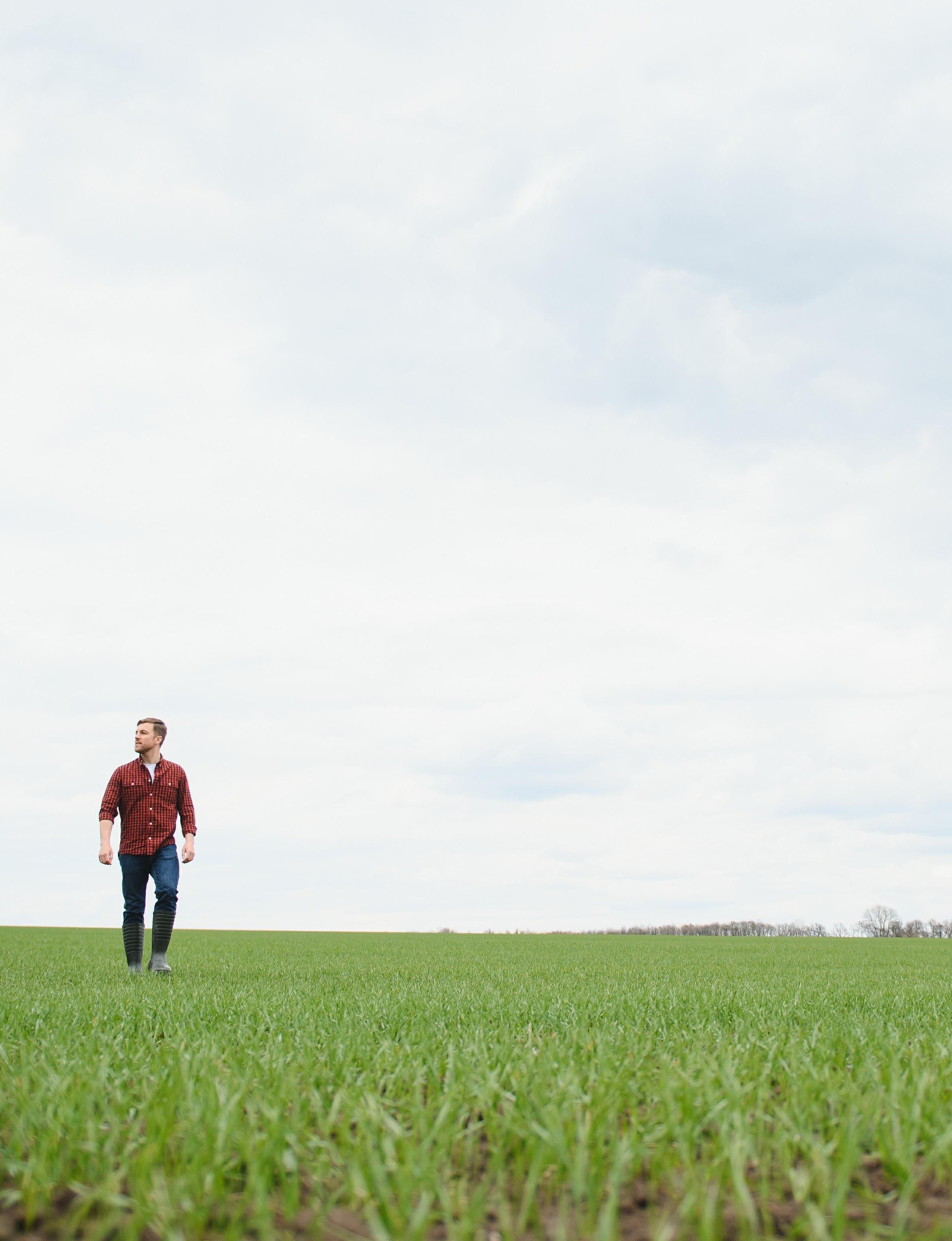
LISTEN HERE
Scan to listen to the Talking Property podcast episode: ‘Australia’s Top Property Performer: The Rise of Agribusiness’.
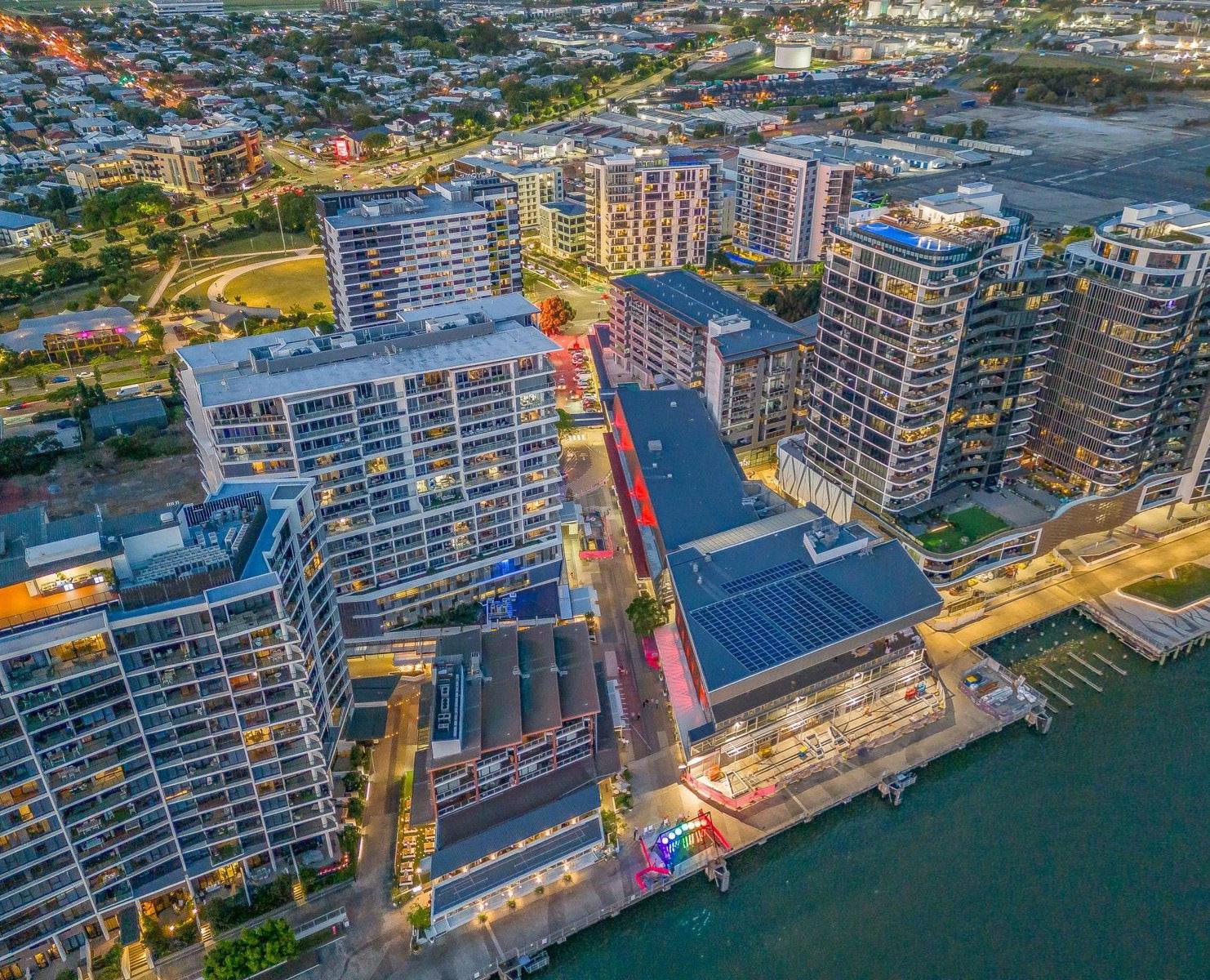
Needle Movers
A selection of recent needle-moving transactions from CBRE.
Portside Wharf
Hamilton, Qld
Purchase Price: $59,400,000
Vendor: Brookfield Property Group
Purchaser: Centennial
Portside Wharf in Brisbane have been sold, with the transaction completed on a passing yield of 7.65% and a sale rate of $4,325 per sqm. The mixed-use precinct includes established retail and future development potential in a key riverside location. The sale drew strong interest from investors, reflecting growing confidence in retail assets with long-term upside. The site’s location within the Hamilton urban renewal area added to its strategic appeal.
This transaction highlights a lift in retail investment activity, with investor engagement expected to remain strong through the second half of the year.
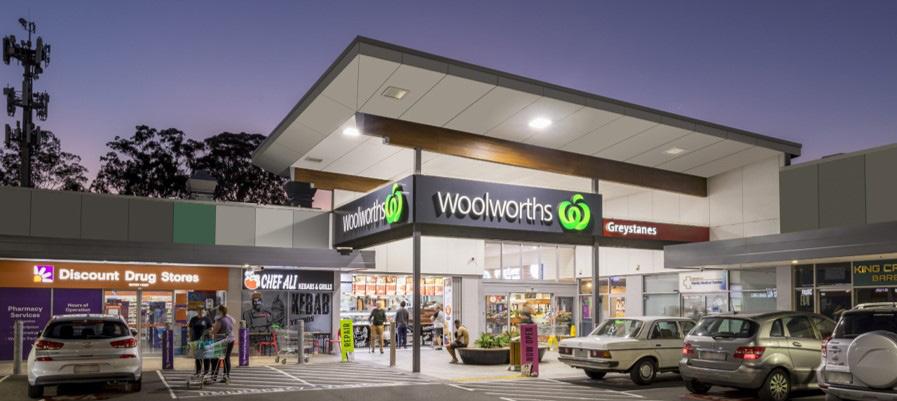
Greystanes Shopping Centre
NSW
Purchase Price: $76,000,000
Vendor: Region Group
Purchaser: Revelop
Greystanes Shopping Centre benefits from a strong non-discretionary tenant mix and a high proportion of income underpinned by major supermarkets and essential services, which supports resilient foot traffic and income stability.
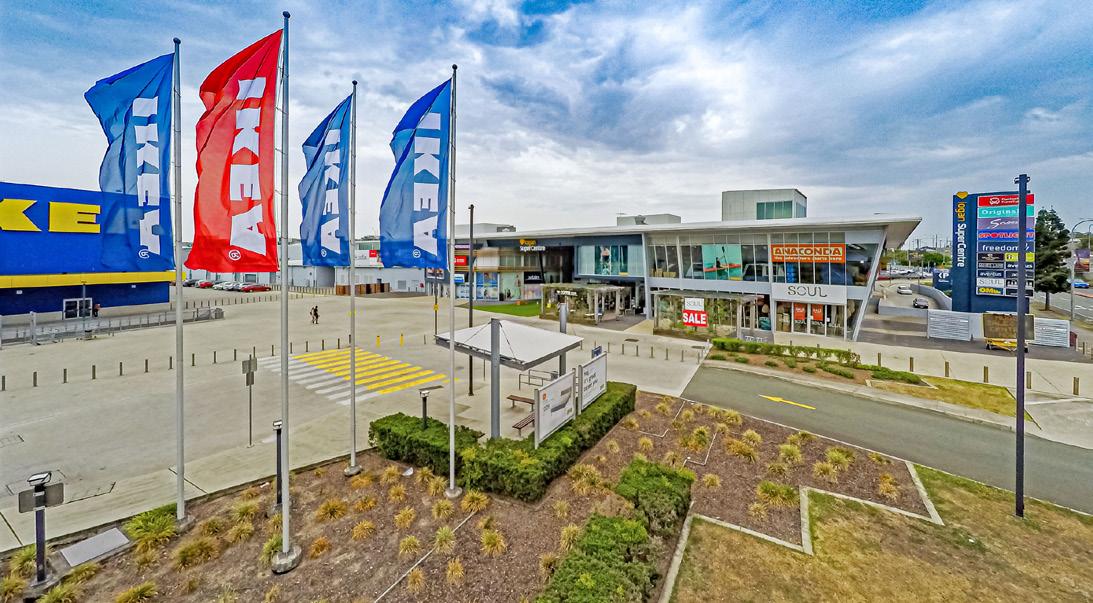
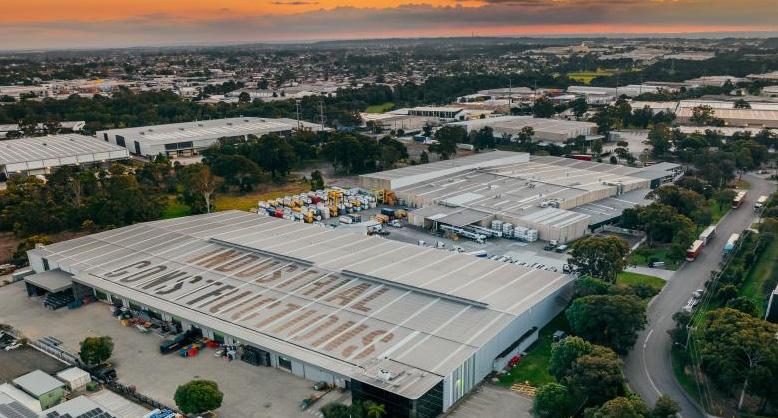
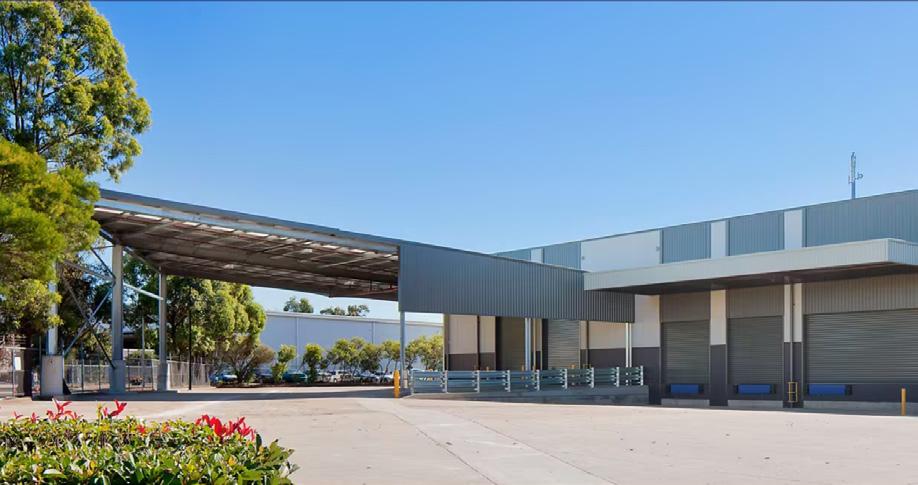
28 & 45 Britton St, Smithfield and 17 Stanton Rd, Seven Hills
NSW
Purchase Price: $201,000,000
Vendor: Goodman
Purchaser: Centuria Capital & BGO (JV)
Centuria Capital and global investment firm BGO have jointly acquired the industrial portfolio in Western Sydney, marking their third institutional partnership.
The off-market acquisition includes three warehouses, totalling ~45,000 sqm of space. The assets were purchased from Goodman Group and are located in tightly held urban infill markets with a vacancy rate of just 2.7%.
The transaction reflects continued investor demand for welllocated industrial assets.
Logan SuperCentre Brisbane, Qld
Purchase Price: $115,000,000
Vendor: Confidential
Purchaser: Centuria
This transaction marked Australia’s largest transaction in the LFR sector since late 2022. Located 20km south of the Brisbane CBD, Logan SuperCentre is securely anchored by leading major national chain retailers Spotlight, Anaconda, Fantastic Furniture, Freedom Furniture, Snooze and Early Settler Furniture.
OFFICE
Institutional and middle markets
ONE 1
CAPITAL ADVISORS
Equity and capital advisory services
DEBT & STRUCTURED FINANCE
Origination and loan services
LIVING
BTR, purpose built student accom, co-living and affordable housing
RETAIL
Institutional and middle markets
HOTELS
Accommodation, pubs and tourism
Capital Markets Team
INDUSTRIAL & LOGISTICS
Institutional and Middle markets
ONE CAPITAL MARKETS TEAM
Our trusted, tenured experts seamlessly collaborate to help clients connect to global capital and opportunities through a cohesive, cross-disciplinary service offering.
DEVELOPMENT
METROPOLITAN INVESTMENTS Commercial
DATA CENTRES
Data centres and digital infrastructure
INFRASTRUCTURE
Airports, roads and ports
ENERGY & RENEWABLES
Energy, oil, gas, mining and renewables
AGRIBUSINESS
Grazing, cropping, horticulture, viticulture, water licenses and carbon offsets
HEALTHCARE & SOCIAL
INFRASTRUCTURE
Childcare, medical, aged care, education, recreation and life sciences
connect with Capital Markets
Flint Davidson
Head of Capital Markets & Office, Pacific flint.davidson@cbre.com.au
Ingrid Filmer
Head of Metropolitan Investments ingrid.filmer@cbre.com
Mark Granter
Head of Alternatives mark.granter@cbre.com.au
John Harrison
Head of Agribusiness john.harrison@cbre.com
Trent Hobart
Head of Development trent.hobart@cbre.com
Chris O’Brien
Head of Industrial & Logistics chris.obrien@cbre.com.au
James Parry Head of Office james.parry@cbre.com
Andrew Purdon
Head of Living Sectors andrew.purdon@cbre.com
Simon Rooney
Head of Retail Investments simon.rooney@cbre.com
Michael Simpson
Head of Hotels michaelj.simpson@cbre.com
Stuart McCann
Head of Capital Advisors, APAC stuart.mccann@cbre.com CAPITAL ADVISORS
Paul Ryan
Head of Capital Advisors, Pacific paul.ryan@cbre.com
DEBT & STRUCTURED FINANCE
Andrew McCasker
Head of Debt & Structured Finance andrew.mccasker@cbre.com
Brent McGregor
Head of New Zealand Capital Markets brent.mcgregor@cbre.co.nz NEW ZEALAND
